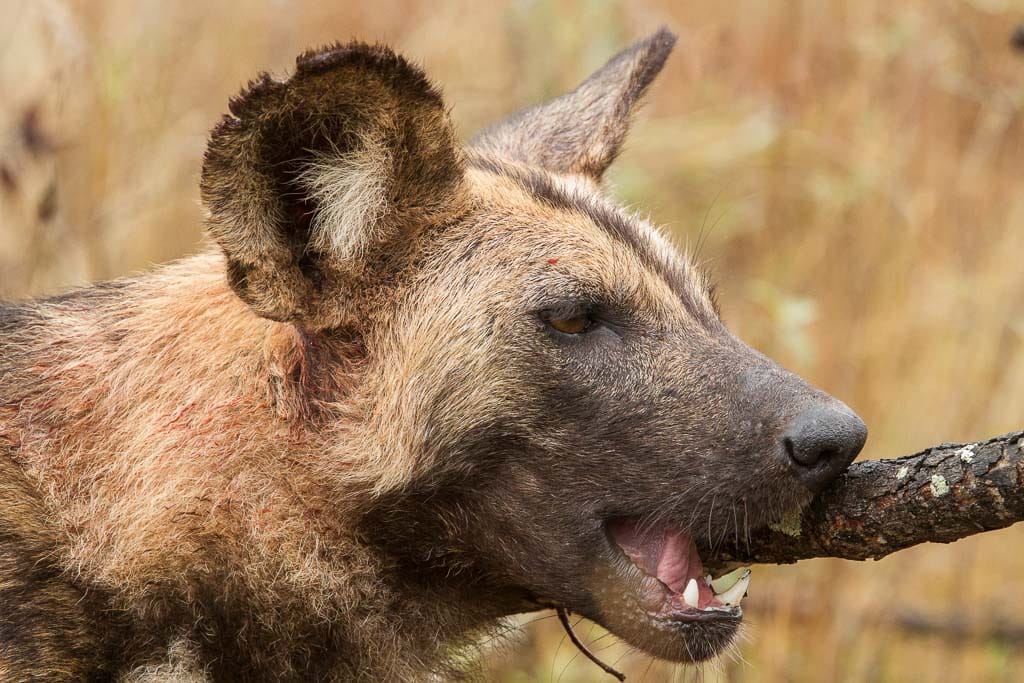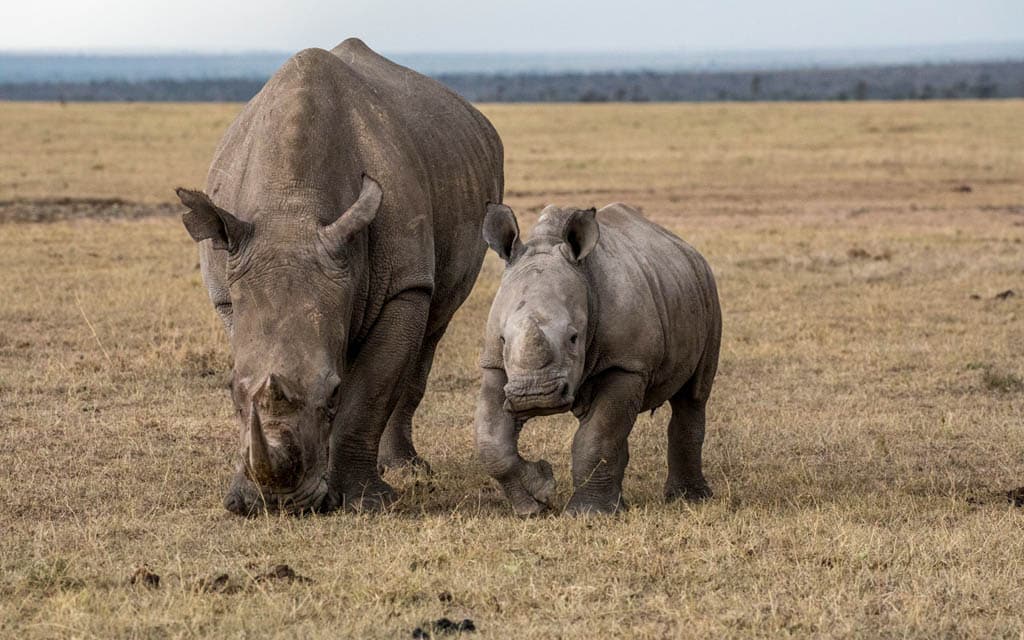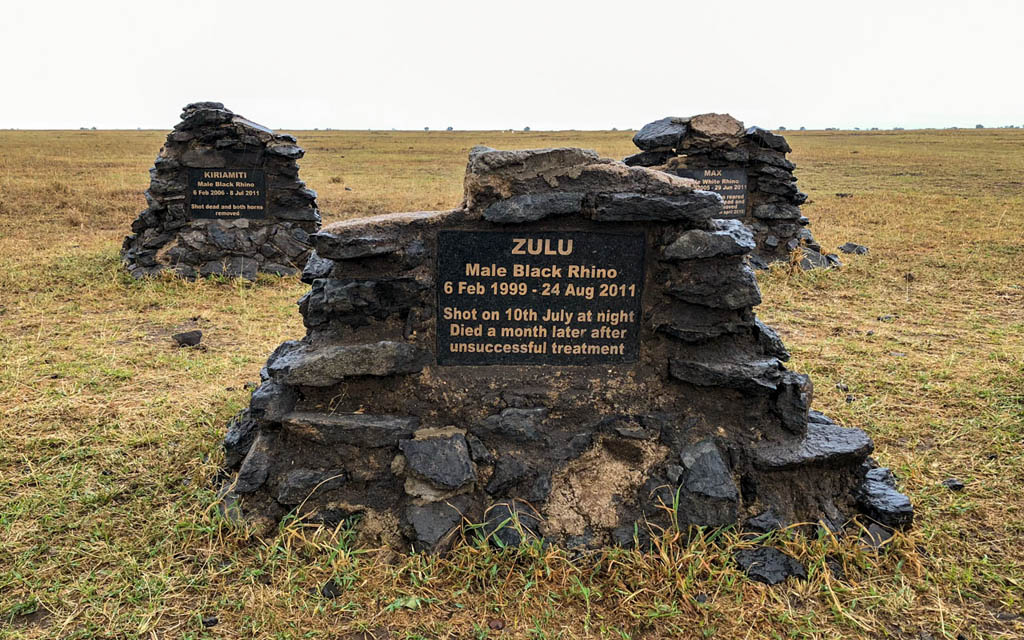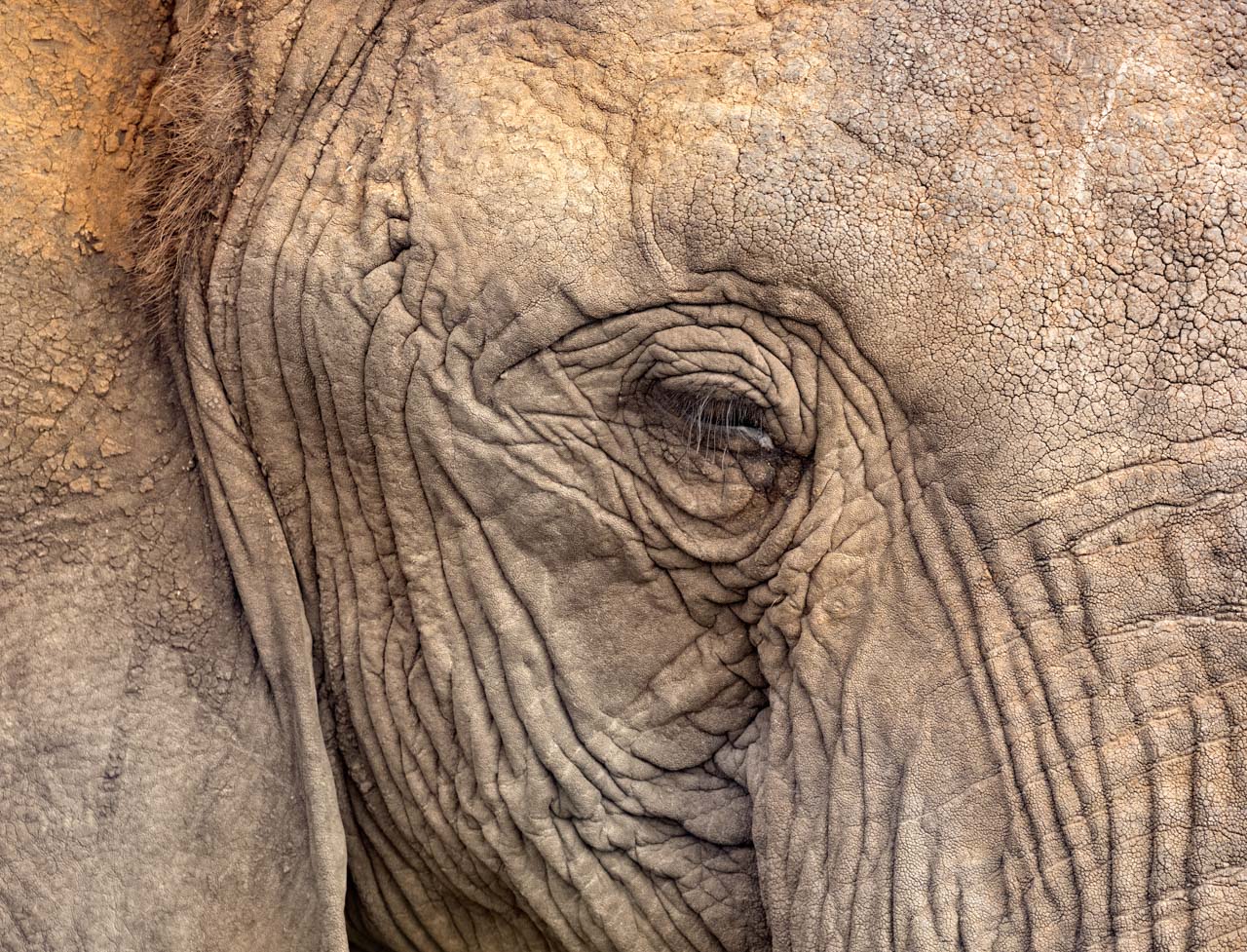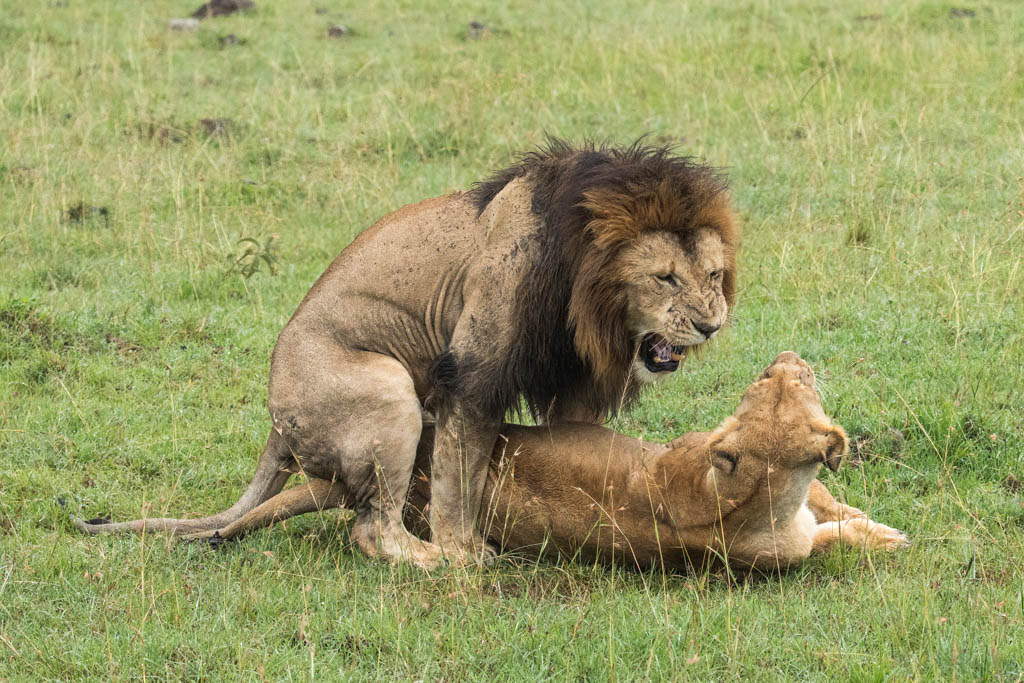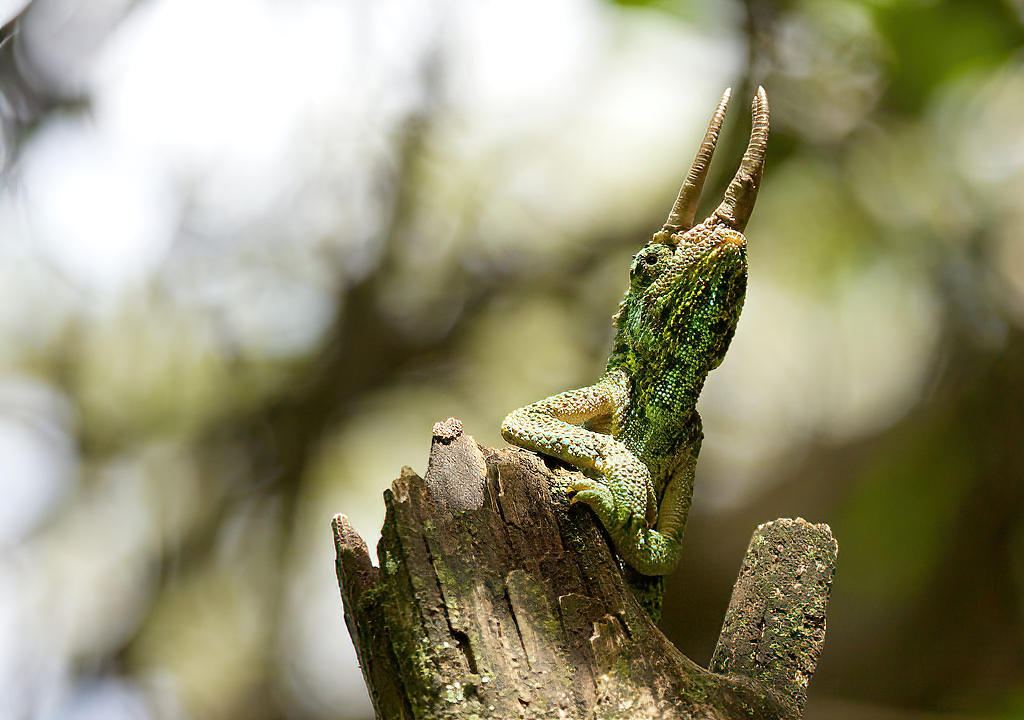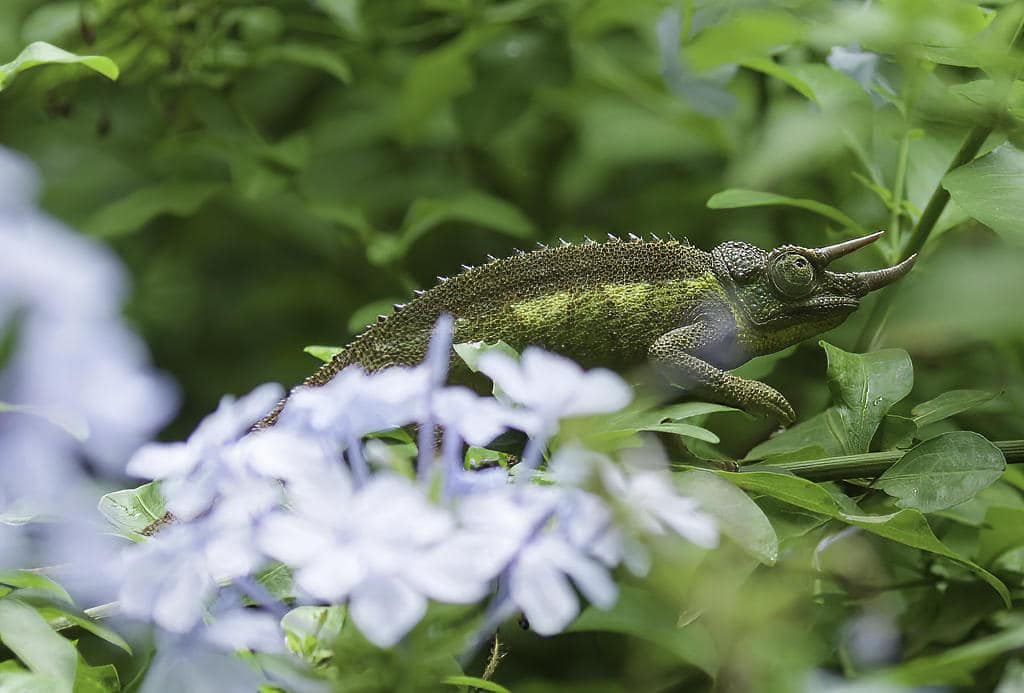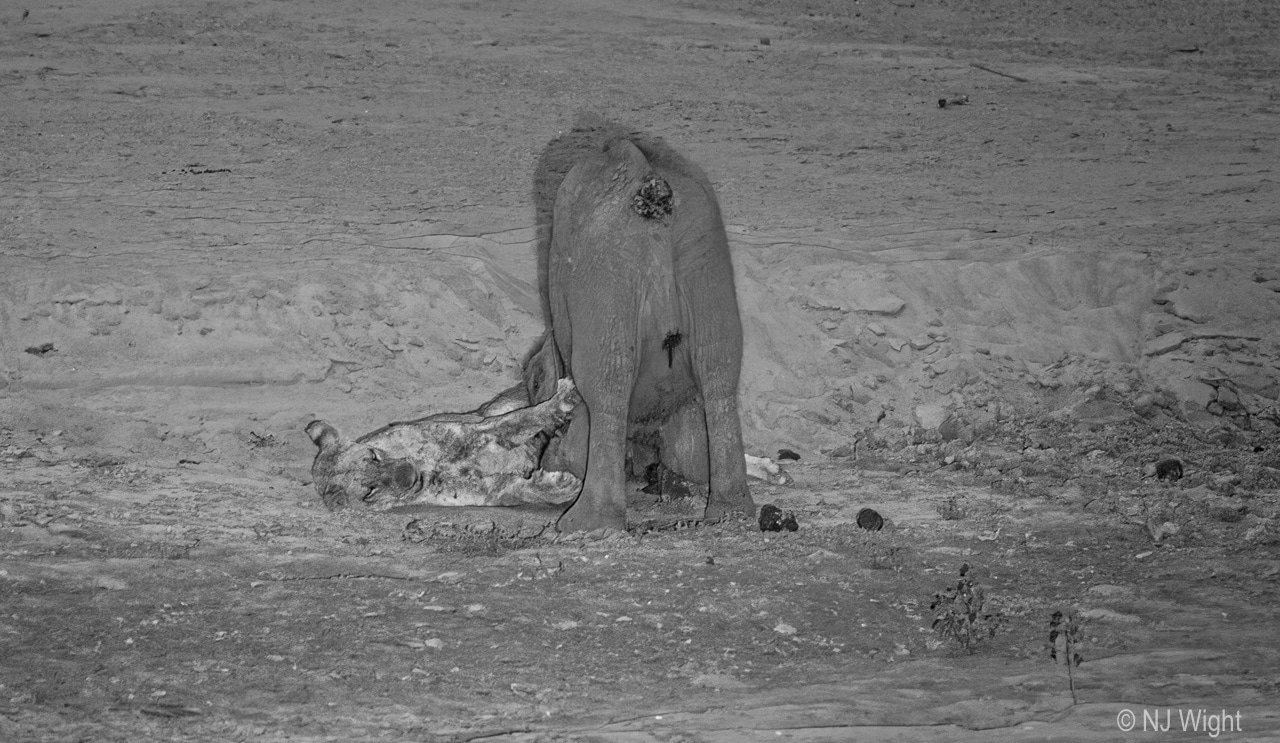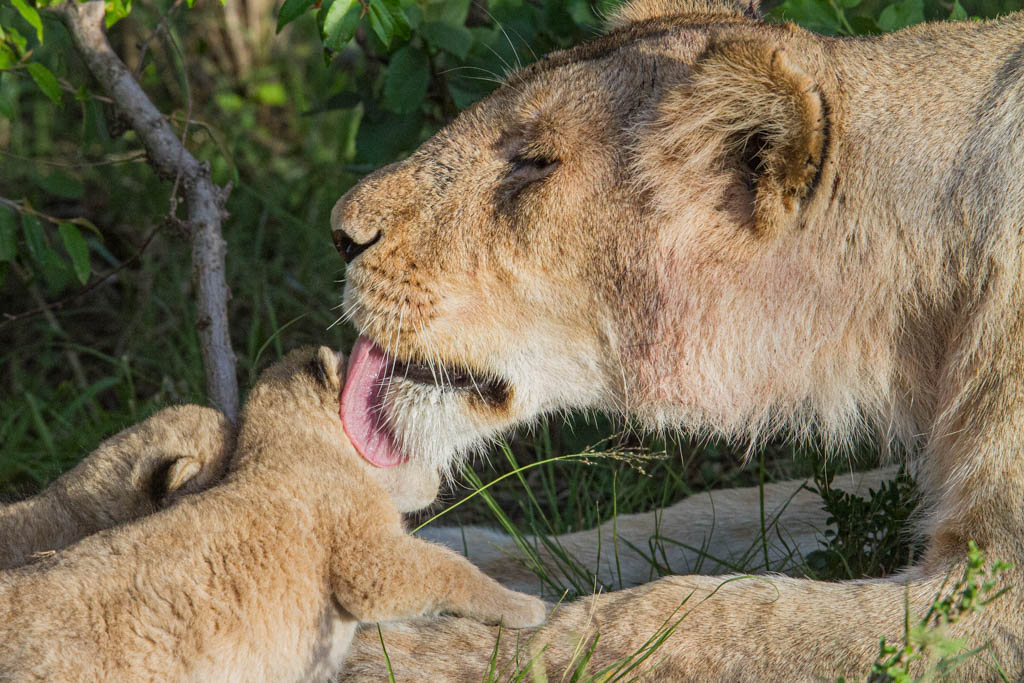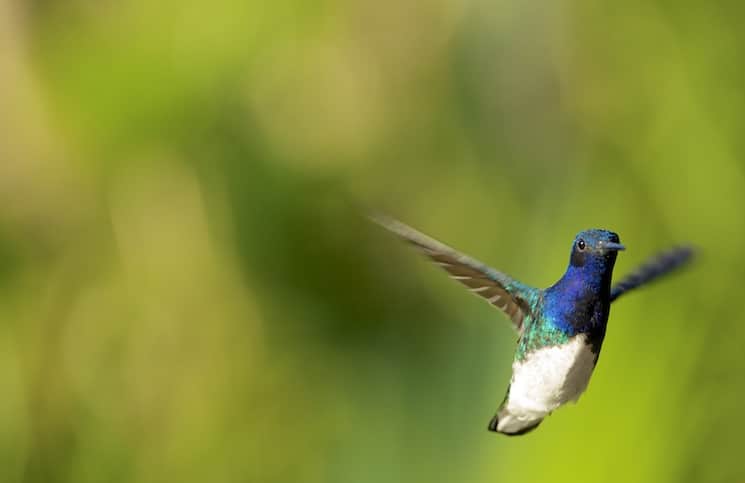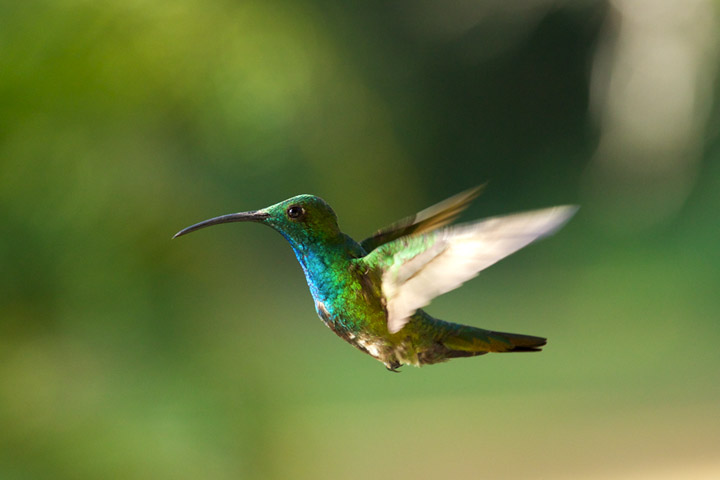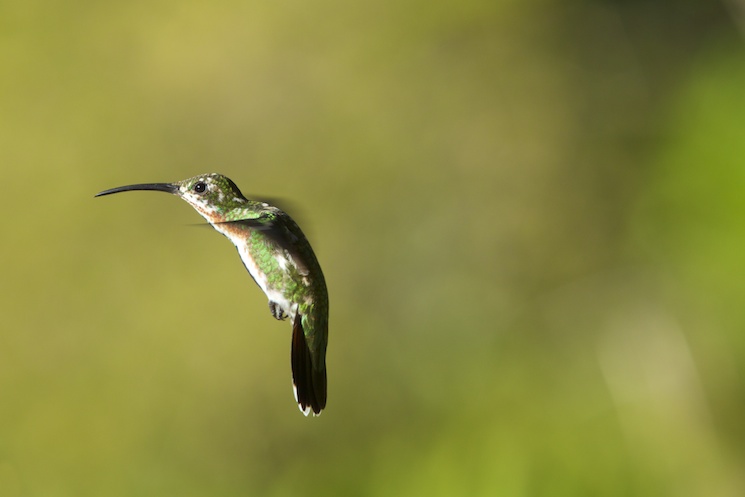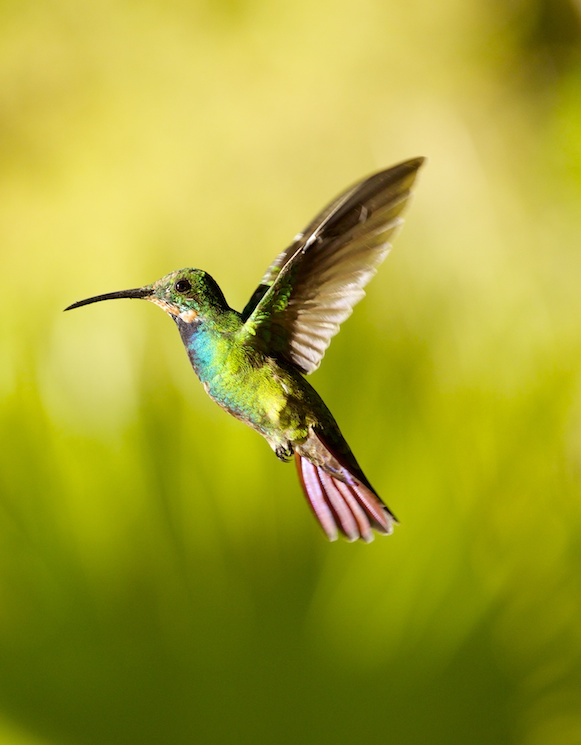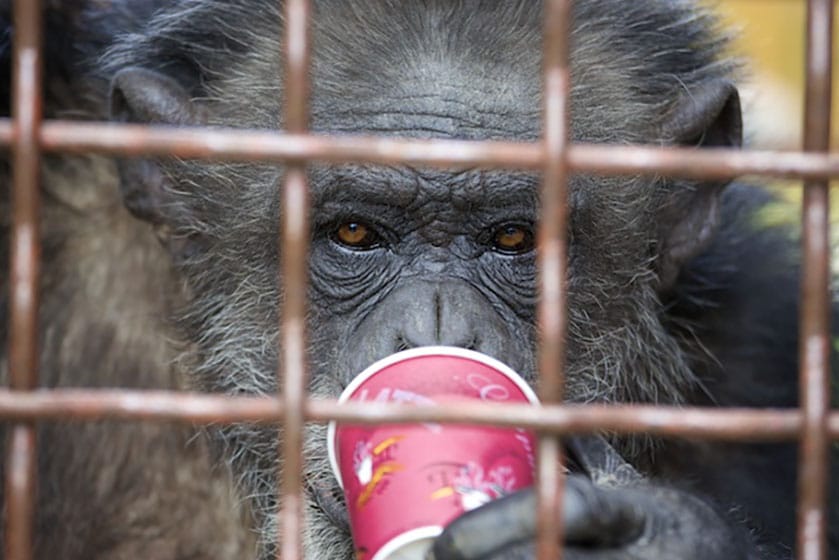Getting Serious About Wildlife Crime
Black Market Wildlife Crime
It's time to get serious about wildlife crime.
Some nights I lie awake remembering the moments I have spent in the company of Africa's extraordinary wildlife. My mind drifts to a darker place and I can't help wonder if the animals I have photographed are still alive? I wonder if they are hunting, grazing, mating, playing, fighting. Being. I lie awake wishing it was all a very bad dream...
Elephants, lions, rhinoceros, vultures, apes, wild dogs...the list goes on. They are disappearing under our watch, slaughtered for body parts to be carved into fashion accessories or sipped in magic elixirs. They are being hunted for their meat and traded for money, trapped and sold for our entertainment and amusement. Black market animal trafficking is now estimated at a staggering 7-9 BILLION dollars, not far behind drugs, weapons and human trafficking.
Sadly, the numbers do not lie. Killing animals is BIG business and we need to get serious about wildlife crime.
Elephants
Africa has lost 99% of its elephant population since the 1930's. There were approximately 10 million elephants in the 1930's and the African Wildlife Foundation now estimates the population closer to 470,000 individuals. While the elephant numbers dwindle, the price of ivory in China does anything but. Since 2010 the price of ivory has increased as much as tenfold.
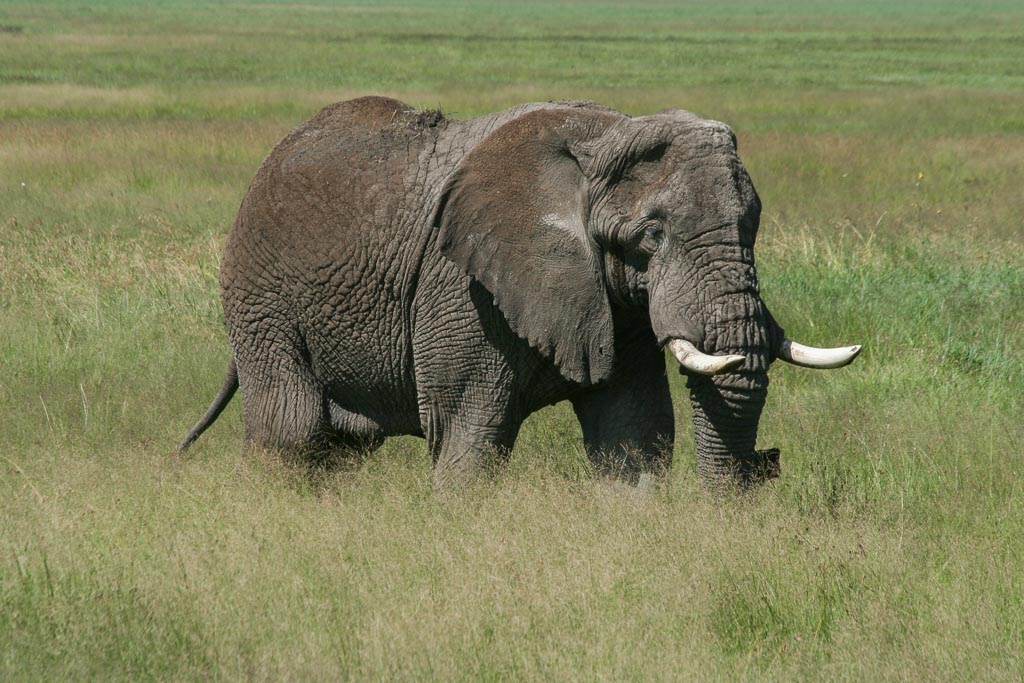
Lions
Around the time I was born, there were an estimated 100,000 lions roaming in Africa. There are approximately 20,000 remaining. The decline is staggering. The death of one mature male lion can have significant impact on a local population. (See The Sad Story of Lion Math) I cannot imagine a world without lions, and yet, it may happen in my lifetime.
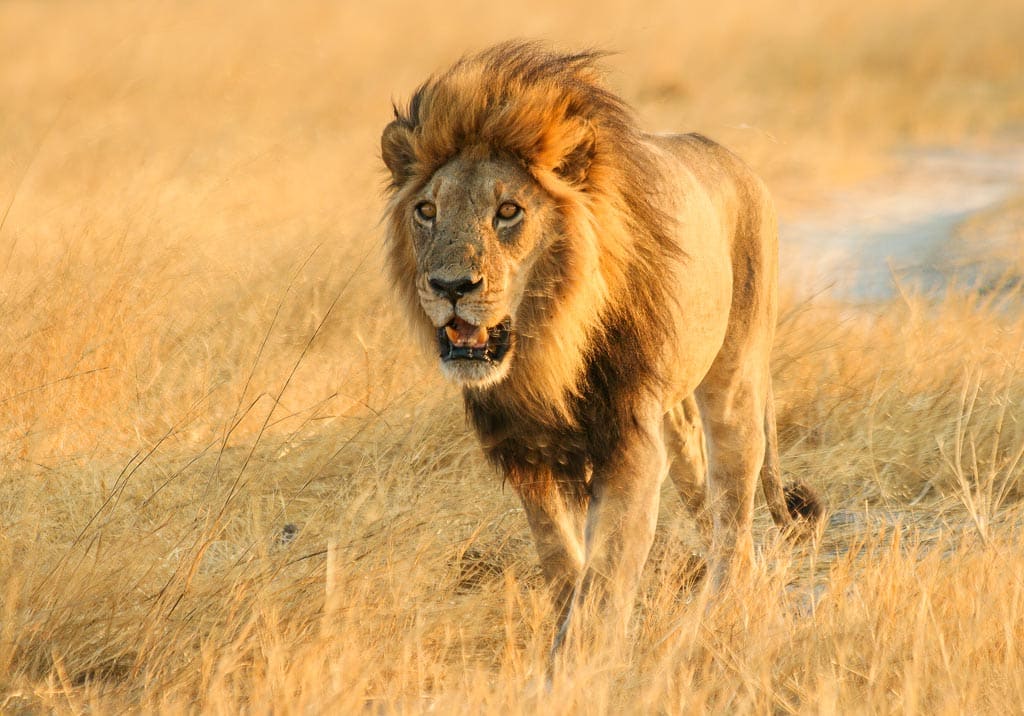
Rhinoceros
I have been lucky to photograph both the black and white rhinoceros at a time when it is facing the most intense threat of all African wildlife. Rhino horn is more valuable on the black market than cocaine and diamonds. At $60,000 kilo, it is by far the most valuable commodity in illicit wildlife trafficking business. In South Africa the penalty for trafficking in small amounts of cocaine starts at 5 years in prison. For rhino poaching the fine is a very affordable $14k. While overall poaching numbers for rhino in Africa have declined over the past few years, the numbers are still a serious threat to the population. There were 750 slaughtered rhinos reported in 2019. According to savetherhino.org, between 2010 and 2019 there were 9441 recorded killings–that is 3 rhinos poached every day.
1 every 8 hours…

Wild Dog
The African wild dog is considered one of the most endagered animals in the world. A pack of dogs will traverse a range as big as 900 square miles. These nomadic pack animals are living on diminishing land parcels areas as human population take over more space. This has resulted in hunting challenges and inevitably, deadly conflict with farmers and herders. The reduced roaming area has led to a weakened gene pool for reproduction. Closer contact with domestic animals has introduced rabies and distemper into the wild dog population, killing large numbers of dogs.
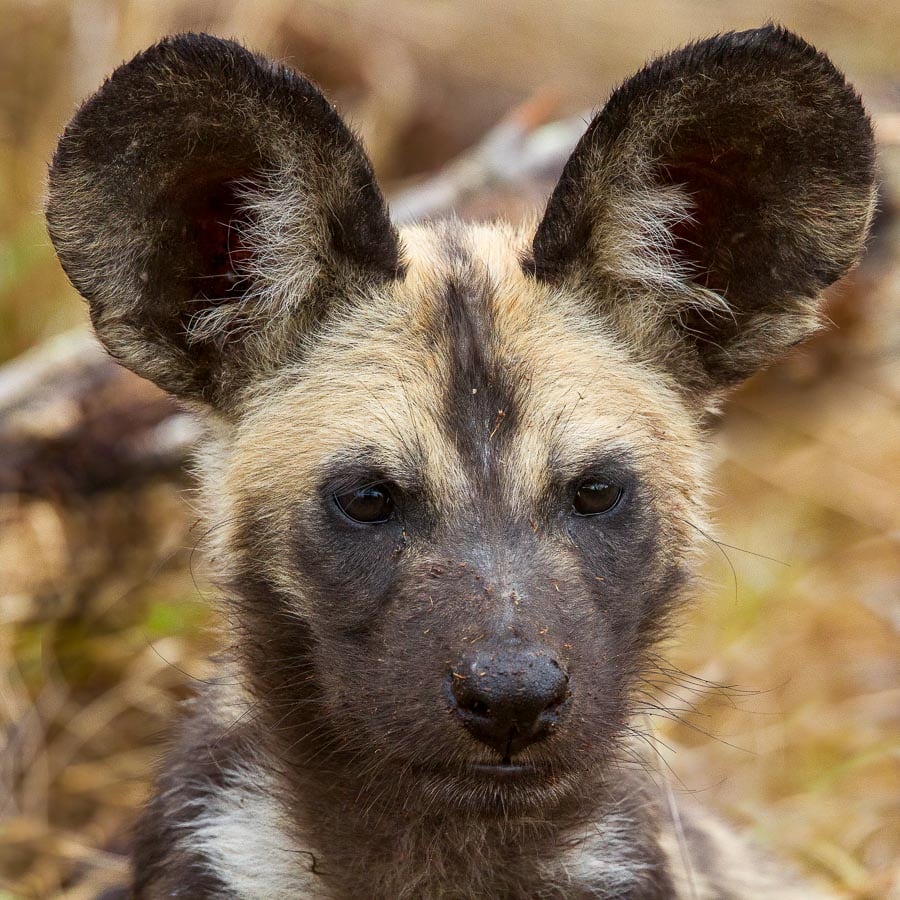
Serious About Wildlife Crime: Humans
"Education is the most powerful weapon we can use to change the world." ‑Nelson Mandella
It is really is up to all of us...
View Lion Gallery
The Rhinos of Ol' Pejeta: Rest in Peace
Ol' Pejeta Conservancy has a deep history of rhino conservation and is home to Kenya's largest population of Black Rhinos. There are currently over 100 living on these protected lands. Critically endangered, the black rhino population plummeted over 90% from 1960s through the 1990s — poached almost out of existence. By the mid-nineties there were an estimated 2300 left alive. Today, there are estimated to be between 5,000–5,400 black rhinos left in Africa, with about 110 in Ol' Pejeta. Sadly, strong demand for their horn continues to threaten their survival.
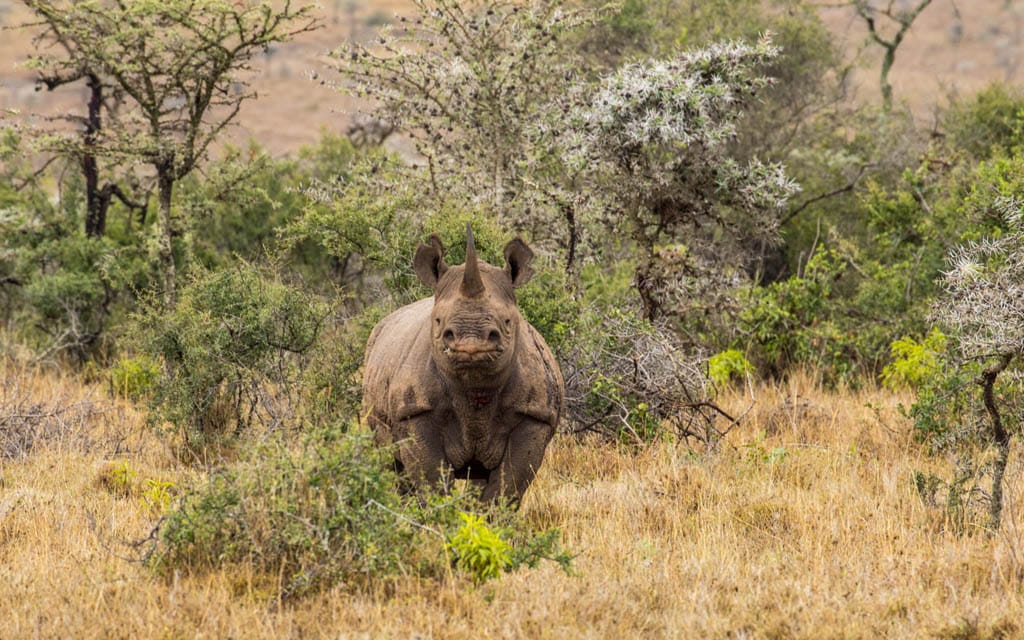
White Rhinos on Ol' Pejeta
There is also a growing population of Southern White Rhinos on the conservancy. White rhinos were near extinction at the end of the 19th century, with less than 50 individuals remaining in South Africa. Through tremendous conservation efforts, the population is now over 20,000 across east and southern Africa. Ol' Pejeta is home to 30. We were very fortunate on this trip to see 5 different white rhinos, including a young calf grazing with both parents.
Rest in Peace Sudan
The conservancy was also home to Sudan, the last male northern white rhino who became known around the world and who died on March 20, 2018. Extinct in the wild, Sudan was one of 4 of the world's last 7 northern white rhinos that came to live in Ol' Pejeta in September 2009, arriving from a zoo in the Chezch Republic. Now, only two females remain and the conservancy vets, along with the zoo, are trying to develop a technique for in vitro fertilization–something that has not been previously done with rhinos. (You can read about the efforts here.)
The Rhino Cemetery
During my last visit in 2018, on a grey and rainy afternoon, I visited the rhino cemetery to pay my respects to the rhinos who rest there. I had not visited this sacred place on previous trips to the conservancy and it was quite an emotionaly charged experience. Fifteen graves are marked with headstones and bronze plaques, paying tribute to the lost lives of these threatened animals.
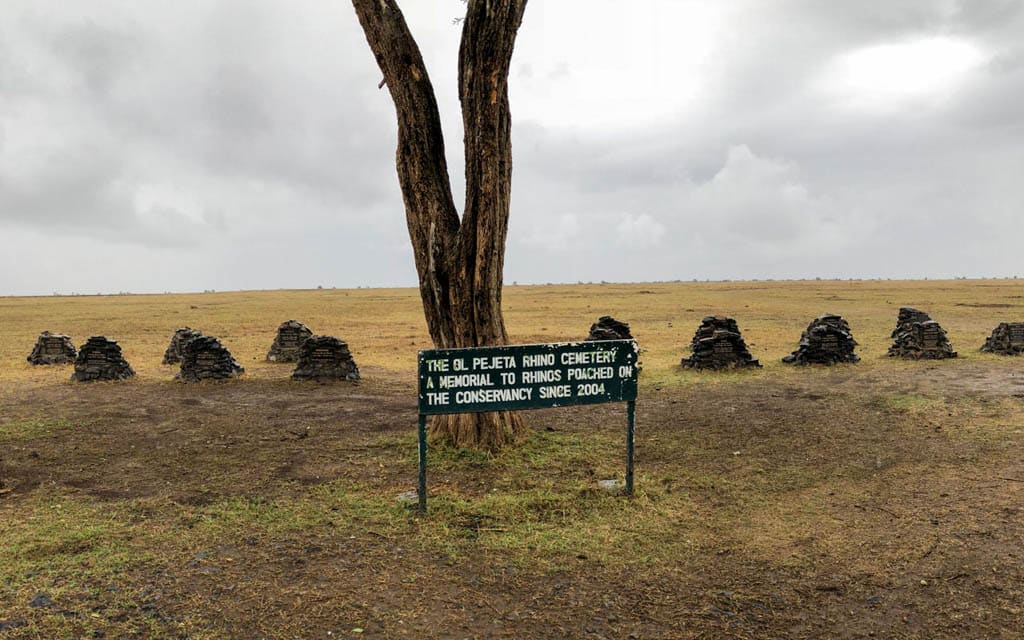
Amongst the group is the resting place of Ishirini, a female black rhino who, in 2016, was killed at the age of 20. She was 12 months pregnant when she was found writhing in pain, horns cut off. She did not survive.
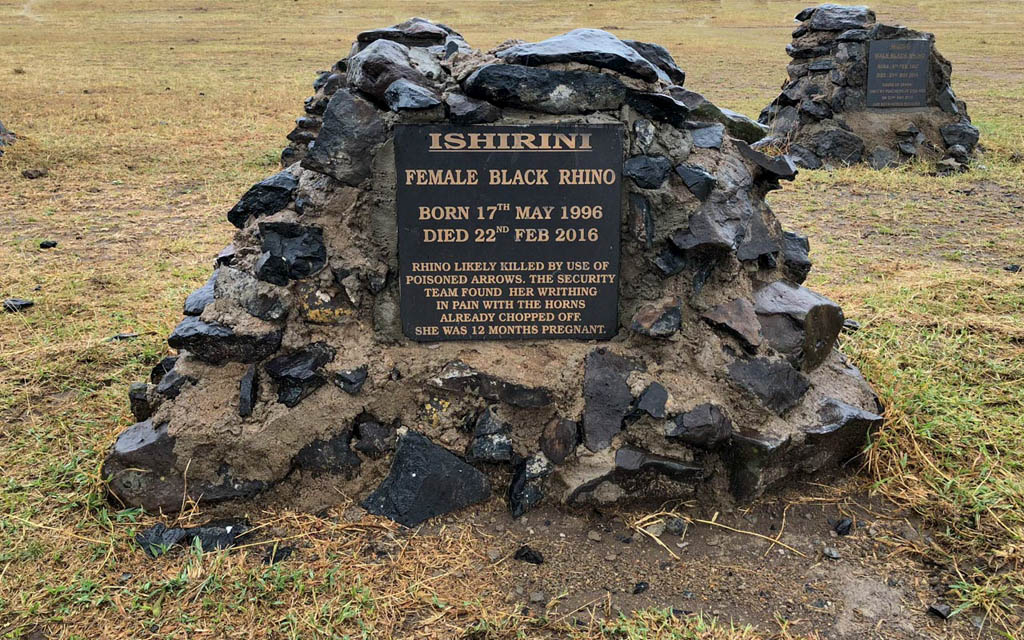
The rhinos that rest here range in age and include both males and females. Many were found shot dead, horns removed. Max, age 6, was slaughtered even though he underwent dehorning procedures meant to protect him from poaching. He was found dead with his very small, regrown horns cut off.
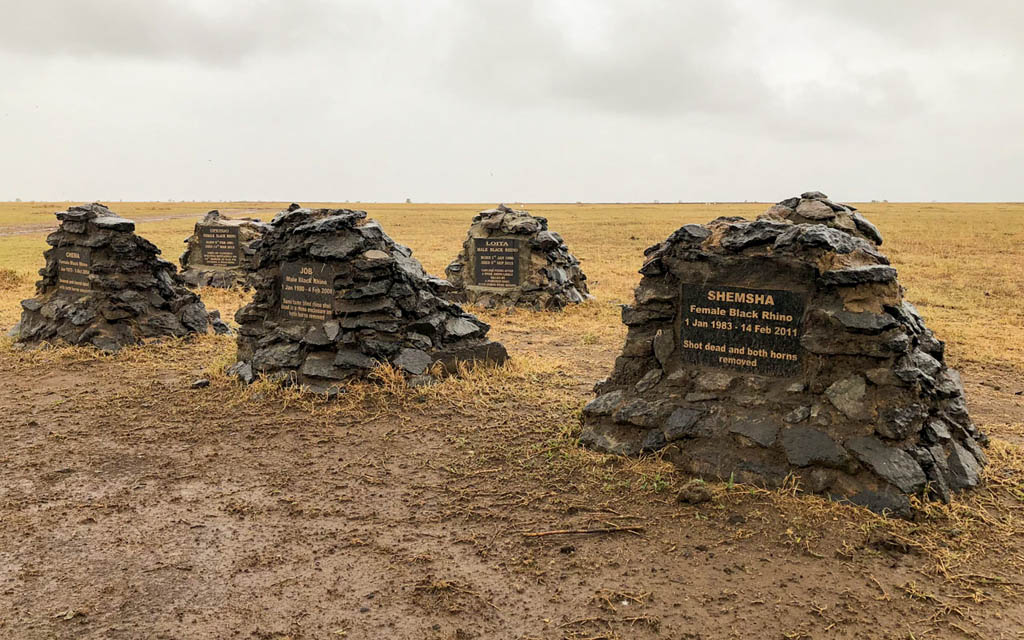
Horn is Not Medicine
The graves of these magnificent and peaceful animals serve as a painful reminder of the need to continue to fight against poaching and trafficking in animal parts. Rhino is readily available on the black market and sells for $60k a kilo. It remains in high demand, especially from Vietnam. Conservation efforts continue, but so does the investment in poaching for black market profits. If it doesn't stop soon, we risk losing Africa's two remaining rhino species.
Rhino horn is not medicine. Rhino horn is not an aphrodisiac. It is keratin — just like our finger nails. It belongs no where but on a rhino.
The Texture of Elephants: Living Landscapes in Nature
When I dream of Africa, I dream of elephants...
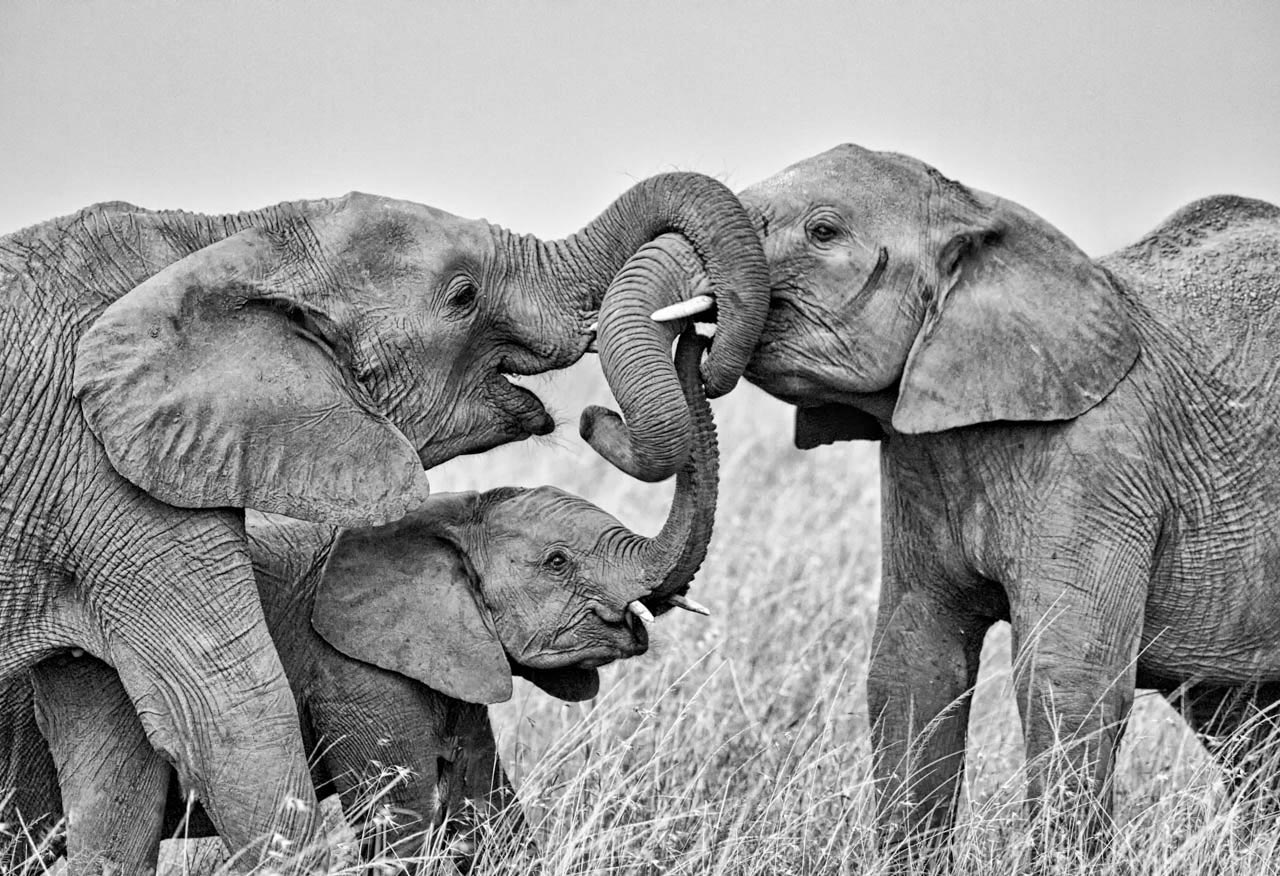
The Texture of Elephants
Wrinkled and rough, creased and crusted, the texture of elephants create living landscapes in nature. These thundering giants with gentle eyes captivate and hold tight in our imagination. Even if you have never seen one, it is likely that your mind can quite easily conjure up an image of this unique and curious creature. And yet, if you have been lucky enough to encounter one up close, you might be hard-pressed to find the words to describe it the magic of being in its presence.
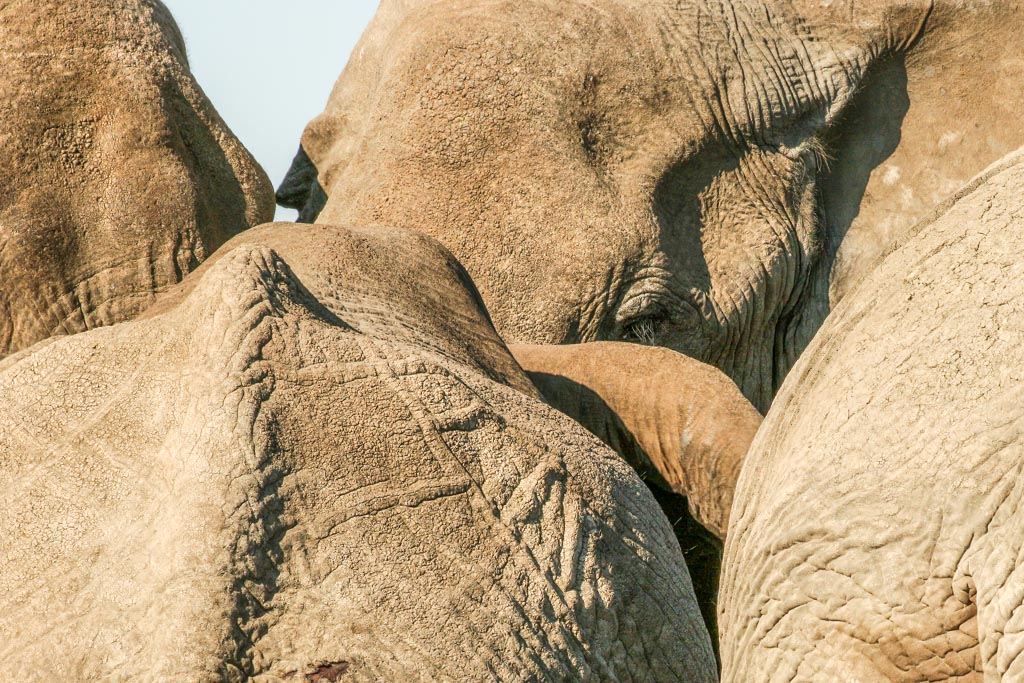
Wild Elephant Encounters
Whether sitting quietly surrounded by a large herd in the Sabi Sands, listening to the cracking of branches and swooshing of trunks as they forage and feed in the woodland, or watching a family play and relax on the banks of Kenya's Ewaso Ngíro River, each experience has been different from the last. And each encounter leaves me longing for the next.
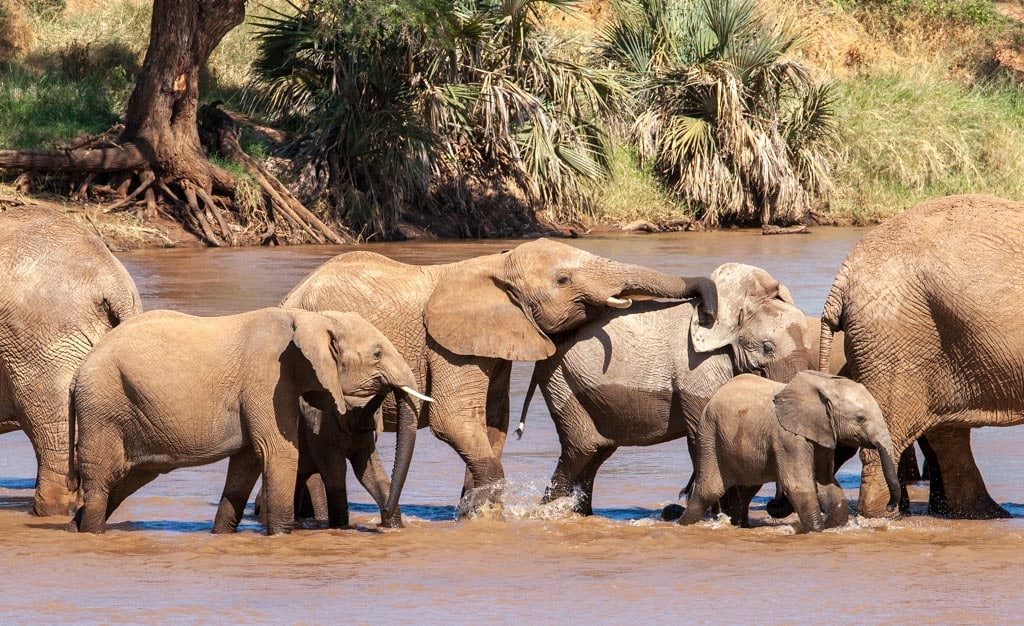
Love at First Sight
My very first trip to the continent was visiting Tanzania in 2007 and I was rightfully humbled by the mock-charge of a large bull in musth! It was in Tanzania that I first stood barefoot in elephant footprints and watched in the moonlight as a small family crossed a dry riverbed 100 feet from our truck. There years later, in Kenya's Samburu National Reserve, I photographed a 3-day old calf — and the next day, that same calf taking baby steps, another day older.
Once, at first-light in Botswana's Okavango Delta, a young bull paid me a visit at my tent, his eyelashes poking through the mesh window as I was lacing my boots. Every experience has been memorable. You do not easily forget an elephant encounter. Now, after 10 years of travelling to Africa, my elephant memories will last me a lifetime!
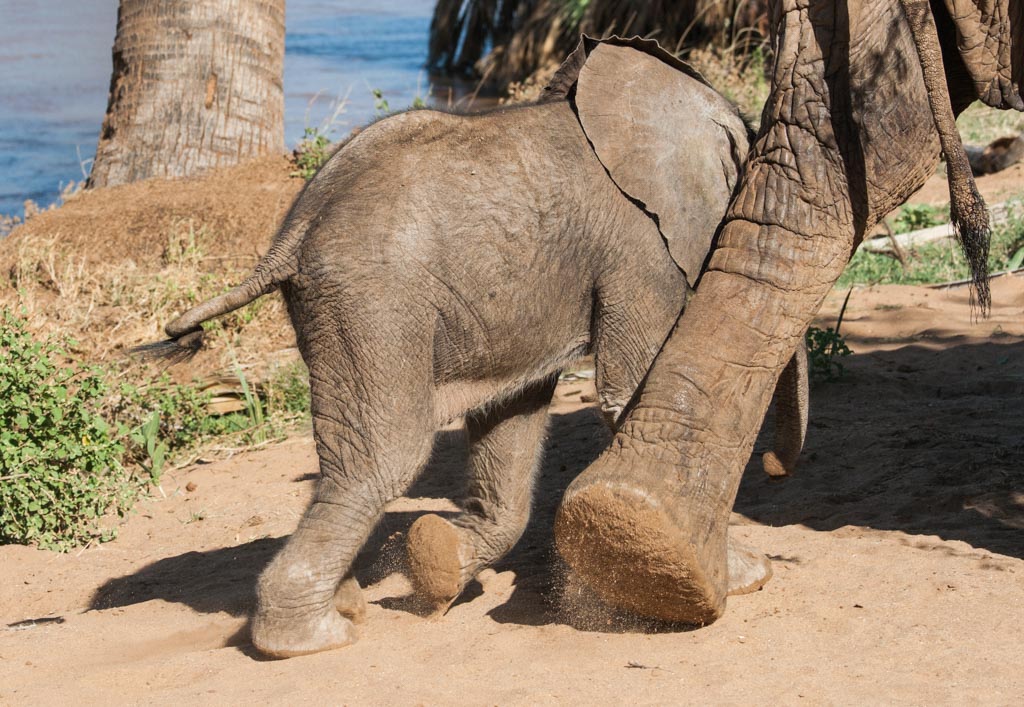
Walking With Elephants
Morula was born around 1977 and was an orphan of a Zimbabwean culling program. She was 31 when I met her and had the opportunity to walk with her through the wilds of the Okavango Delta. She was one of three elephants that I was privileged to spend time with, accompanied by Doug Groves of the Living with Elephants Foundation. Rubbing her trunk, legs, and belly, my fingers roamed her textures, delighting in the feel of her hard, rough skin and her prickly, thick ridges covered with short bristles of hair. We joined her family, trailing behind and walking through the bush, in her way, in her time. When she lay her trunk over my shoulder it felt like a wire brush and I was astonished by its weight. My heart danced in my chest...
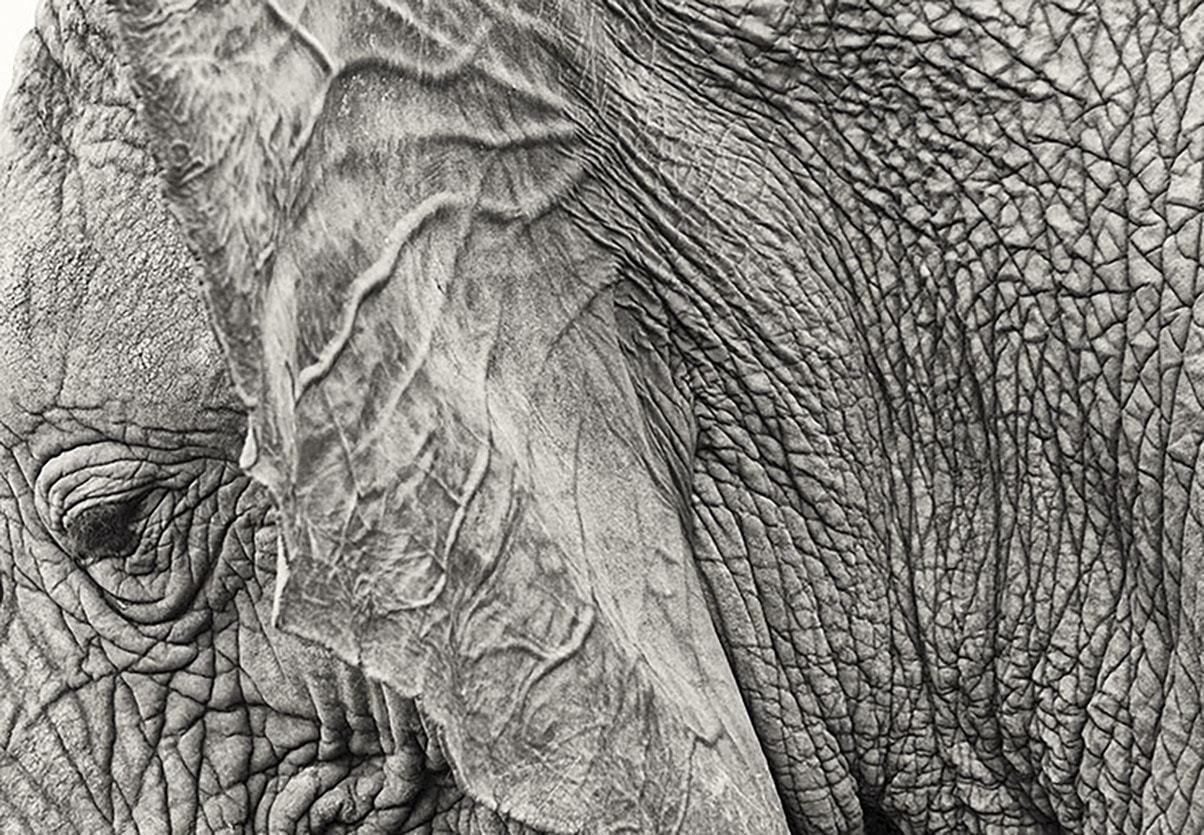
Elephant Ears are a Soft Touch
There is absolutely nothing delicate about the texture of elephants. That is until you rub behind their ears. The most heightened sensory experience I have ever had with an animal has been running my hands behind the ears of an elephant. Their skin transforms. Warm and soft with smooth contours, those enormous flaps protecting hidden hollows. It is magical. They are living landscapes my palms have roamed in wonder.
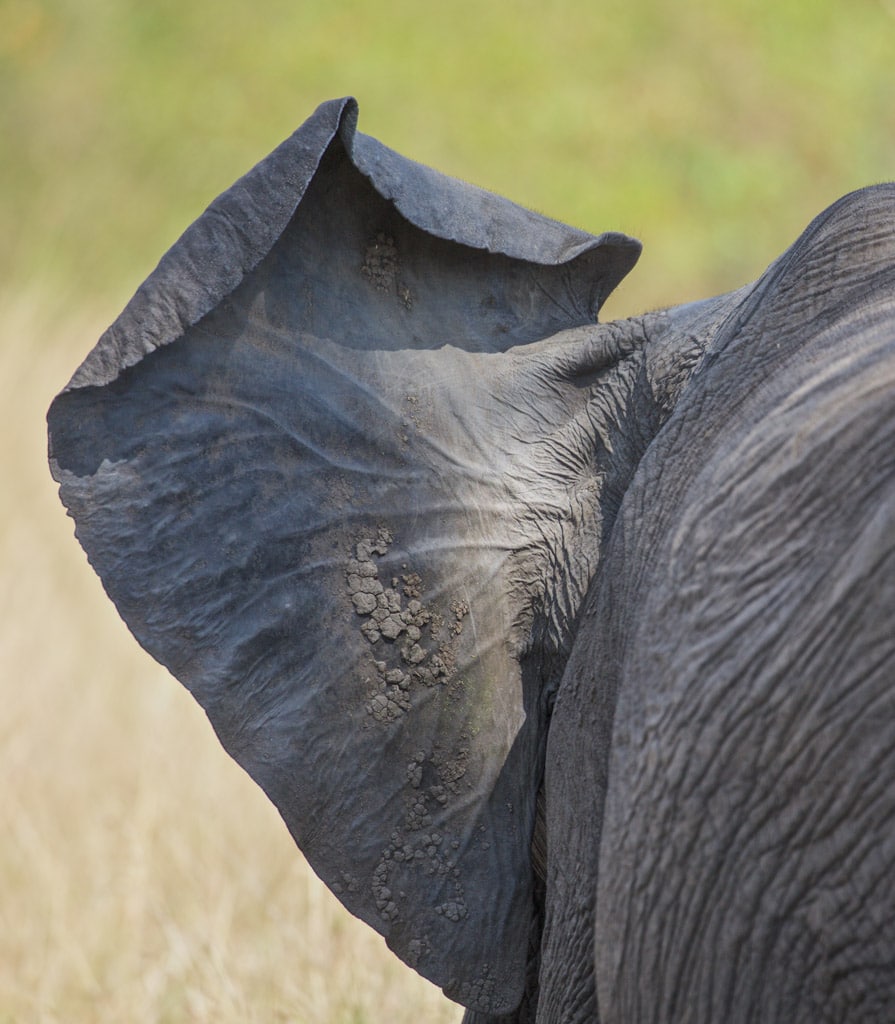
Our Connection to Elephants
Elephants seem to hold enormous appeal. I am not quite sure what it is about this marvelous animal that captivates us so. Whether it is the unimaginable size or that wondrous and unusual body? Or perhaps we are drawn to the herd and the close sense of family they share with humans? Or maybe their deeply emotional personalities? Whatever it is, of one thing I am quite certain; our connection to the elephant runs very, very deep.
I know I have been charmed by the elephants I have met and I am fortunate to carry them with me.
View Elephant Gallery Check out NJ Wight's Art Cards!
For more information about elephants and how you can help, please visit the following organizations:
http://www.sheldrickwildlifetrust.org/
http://worldwildlife.org/species/african-elephant
http://www.bornfree.org.uk/campaigns/elephants/
Lion Population: The Sad Story of Lion Math
The African lion population is currently estimated to be around between 20,000 individuals.(Panthera.org) It is fair to say the future of the African lion is in serious peril. Listed as vulnerable by CITIES, loss of habitat and conflict with humans are two of the most pressing threats lions face and both pose difficult challenges. Poaching, which feeds the burgeoning black-market demand for lion parts, and trophy hunting — legal and illegal — are also putting downward pressure on lion populations.
The Ideal Trophy
Out of the entire lion population the number of remaining adult male lions is considered to be about 4,000–5000. A mature male lion, aged 4–8 years, is the “gold standard” for a successful lion hunt. Weighing about 180 kg and standing about 1.2 meters tall, these broad shouldered, magnificent cats are the most sought after trophy. With more than 600 killed legally each year in hunts, the ramifications of their loss is far-reaching. When you unpack the numbers it becomes abundantly and frighteningly clear that the death of a single adult male lion can have a devastating impact on overall population numbers.
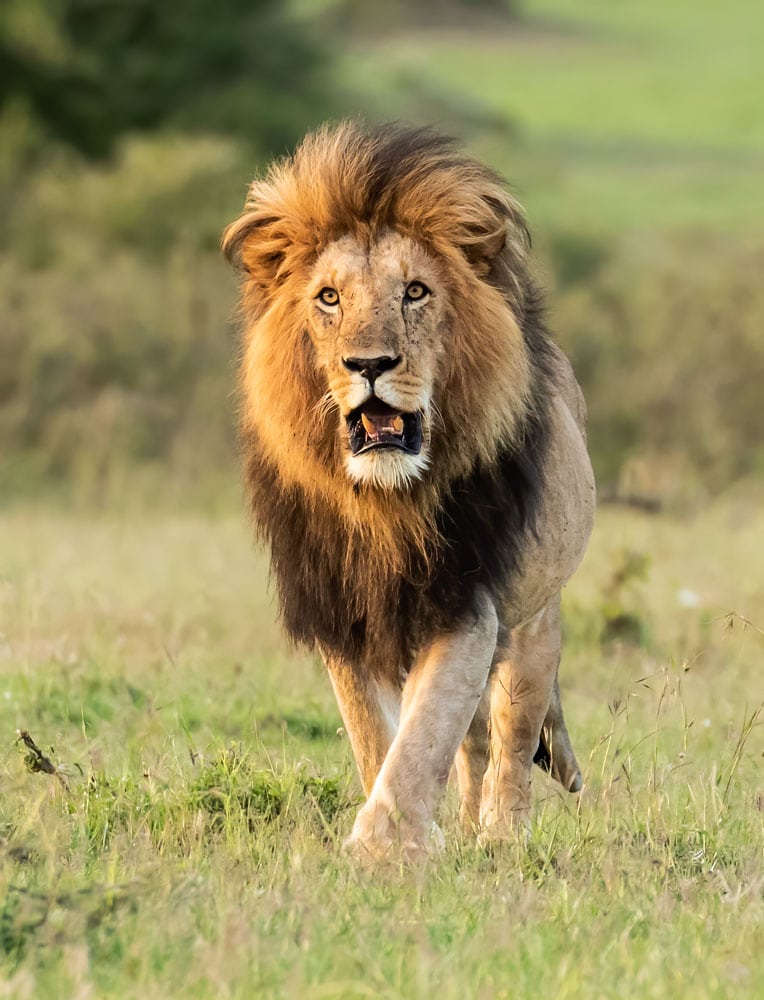
A young male lion will leave his pride some time after the age of two and begin a challenging life as a nomad. As he grows stronger and older, he will seek out new territory, and eventually, a pride of his own. Male lions will often form a coalition with one or two others in order to increase their chance of success in challenging for territory. By the age of four or five, he might become a dominant pride male.
The Pride
A lion pride can be made up of as few as three or more than forty individuals. An average pride may be closer to fifteen. There will be one, or often two, dominant males. In a large pride there could be as many as a dozen adult females. The lioness are generally related and in many cases, stay with their pride for life. Depending on the number of breeding females, there will also be a brood of cubs. A lioness may give birth to up to six cubs, but an average litter is three. The pride lionesses of breeding age will often have their cubs at the same time because this allows the cubs to nurse from multiple Moms.

The Sad Story of Lion Math
In the name of ego, sport and power, a trophy hunter takes aim with a high-powered rifle and kills a young male lion. (One lion dead.) This male, with his full mane, is the protector of his pride. Once killed, the pride becomes vulnerable. His coalition partner will be left to rule on his own. The threat from younger nomadic males looking for their own territory will often end in a fight to the death for this pride’s remaining male. (Two lions dead.)
For the sake of argument, let's say the pride is twenty lions, including six adult females. Consider four of the females have an average of three young cubs. The first thing an incoming dominant male (or males) will do is kill the pride cubs. (14 lions dead.) However, a lioness’s first instinct will be to protect her cubs from rogue males. She will be fierce and in the process of defending her family she may sustain life-threatening injuries or die. Male lions will not waste their energy protecting another bloodline–they are hardwired to start their own. As long as a female has cubs she will not go into estrus. Killing her cubs resets her reproductive cycle and she will soon be ready to mate.

From the killing of one male lion for a hunting trophy the subsequent death toll for this pride could result in the loss of fourteen to eighteen lions. Between the years 2003–2013 there were an estimated 10,000 legally obtained hunting trophies of African lions. It is little wonder then, that the overall populations have plummeted. It is currently estimated that trophy hunters legally kill between 600–700 lions a year (IUCN estimate). Apply the above scenario to only ten percent of these kills and the potential loss is somewhere around 1,000 lions.
The odds are not in their favour.
“A world without the distant roar of lions at dawn, as the mists start to lift, is too terrible to contemplate.” –Dereck Joubert
View Lion GalleryLion Mating: She's the Boss
Life is not always easy for the King. When a lion receives his mating call to duty, he is required to muster up all the stamina he has to satisfy his lioness. Given a lion pride may have several females, his work is cut out for him. When a lioness is in heat and looking to mate, she calls all the shots. Much as it is with other big cats, she decides when, where and how often mating will take place. His job is to...well, get the job done.
Lion Mating
Female lions will start mating at about 4 years of age, while males begin closer to 5. Breeding is not seasonal with lions but the females in a pride will often be synchronized in estrus. Much like her feline cousins, a lioness coming into heat will advertise her readiness with sent marking, calling, rubbing on objects and rolling around on the ground. She will engage in a lot of display and she will also be defensive and scrappy.
"She rubs against the male, presenting her posterior with tail raised invitingly, but when he makes a bold approach, she turns upon him spitting, scratching and yowling. The next moment she writhes on the ground at his feet or invites pursuit." –Richard Estes, Author, The Behaviour Guide to African Mammals
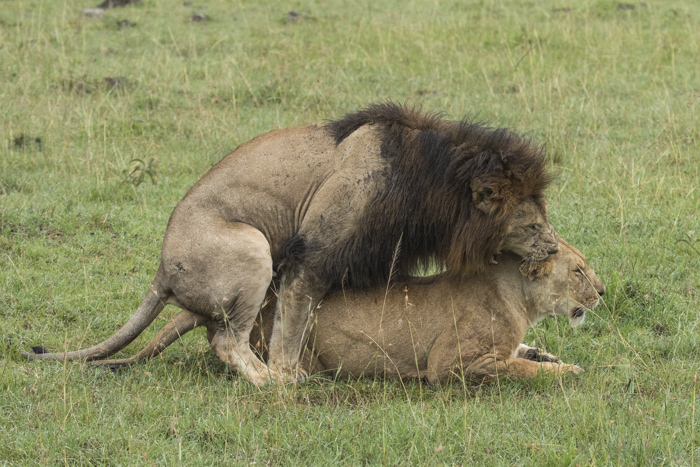
The Big Finish
Male courtship behaviour usually entails lots of head rubbing with the female, urine spraying, licking his genitals and patiently following her. When the lioness is ready and presents, the male will try to grip her neck before mounting. Once he mounts, copulation is generally completed with a few thrusts.
"Immediately afterward, the female screams, or snarls, and often twists and hists out at the male, who jumps back growling." Within a few minutes courtship is resumed." The Behaviour Guide to African Mammals, Richard Estes
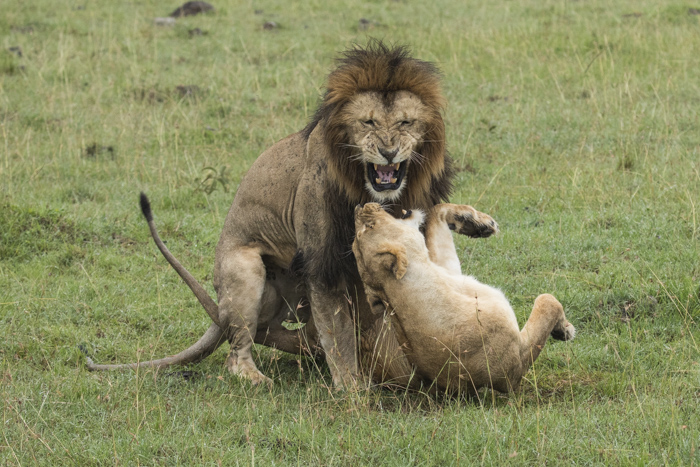
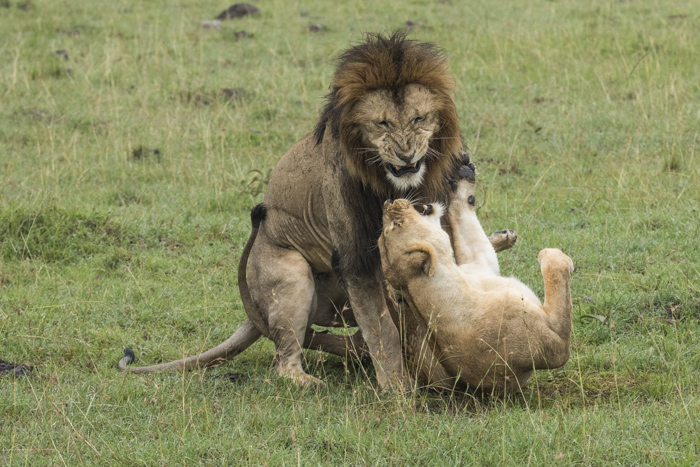
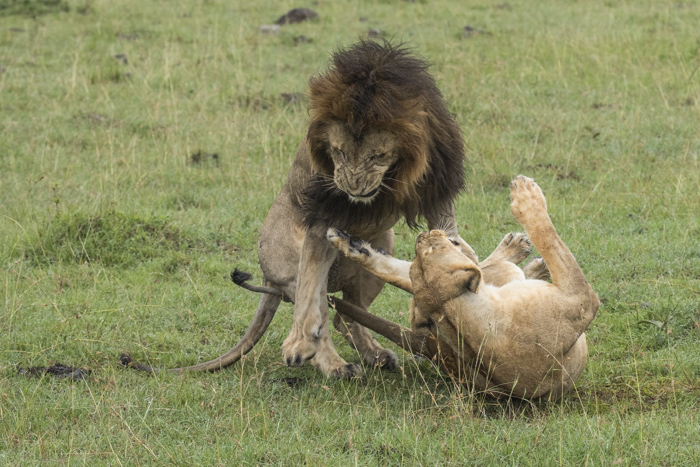
Gestation is 14–15 weeks and the typical litter is between 1–4 cubs. She will find a well-hidden, bushy area to have her cubs and will keep them sequestered from the pride for over a month, moving them often to keep them safe. When she eventually rejoins the pride, she will share the mothering duties, nursing her own cubs and those from other lionesses in her pride.
For more lion photos, check out my lion photo gallery.
View Lion GalleryJackson's Chameleon: Love at First Sight
When I travel to Africa and meet my guides for the first time, one of the first questions they ask is, What are you hoping to see? Expecting to hear leopard, rhino or elephant, I always enjoy the startled expression that briefly lights up their face when I reply; A chameleon. I love chameleons and photographing them is very high on my wish list when I go on safari. I have had some very lucky encounters with South Africa's flapneck chameleon, the old-world lizard that first seduced me and ignited my passion. But in November of 2014 I was fortunate to meet Anton Child, proprietor of The Emakoko, a fabulous lodge in Nairobi National Park. Anton's enthusiasm for snakes and reptiles was infectious and he quickly introduced me to to a little three-horned wonder: the Jackson's chameleon. I must admit, I fell hard. I soon realized I would become a loose and easy woman when it came to loving little green reptiles.
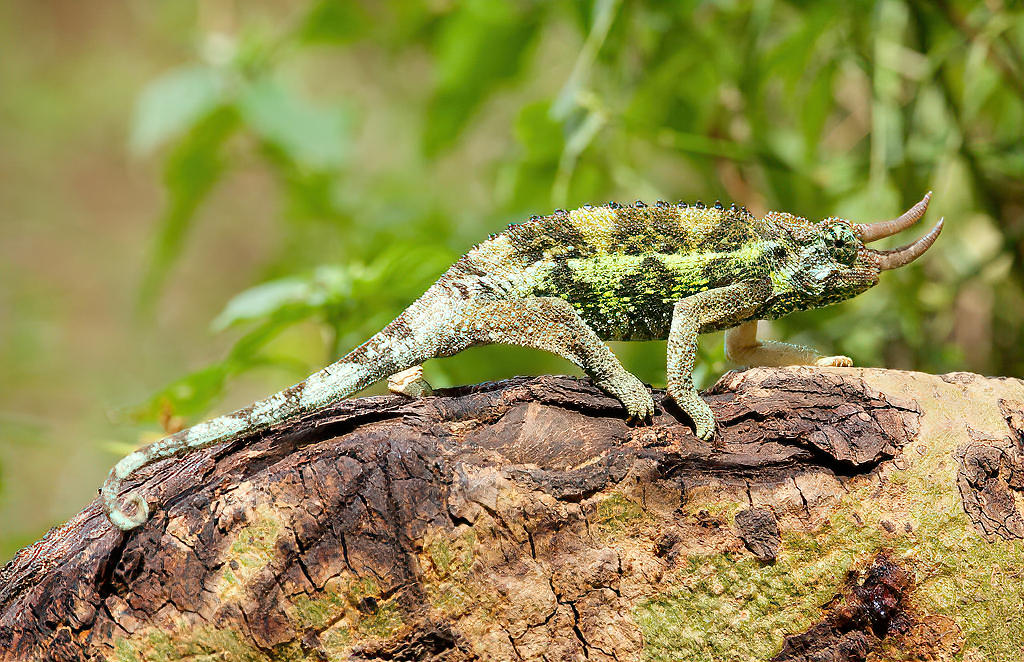
Trioceros jacksonii
Trioceros jacksonii, the three horned chameleon gets its name from trioceros, a Greek derivative from the combined terms tri which means three, and keras meaning horns. These little lions are known for their fierce defensive displays where they can be seen hissing and lunging at their opponent, as well as doing battle with their unique and formidable horns. These unique looking lizards with their little mitten-like hands have wonderous eyes shaped like a dotted turret with a glassy pupil. The males have three horns protruding from their crest and their long and speedy tongues, extending 1.5 times their body length, can fully extend in .07 seconds.
Jackson's chameleon Socializing
Jackson's are solitary lizards and outside of their mating season will stick to themselves, intimidating each other if territories are compromised. But when the days get hotter and longer and it is time to find a mate, males will begin a series of displays to initiate courtship with a lady-Jackson's. As they sway and dance, lifting their spiny backs higher, they might stretch up their neck and open their mouth wide, displaying their powerful jaws hoping to convince her of their hunting prowess. They will also rapidly change colour creating a vibrant display meant to win her heart. And if a female happens to have eyes for two males, it will come down to a joust with horns to determine who will move on to the next round.
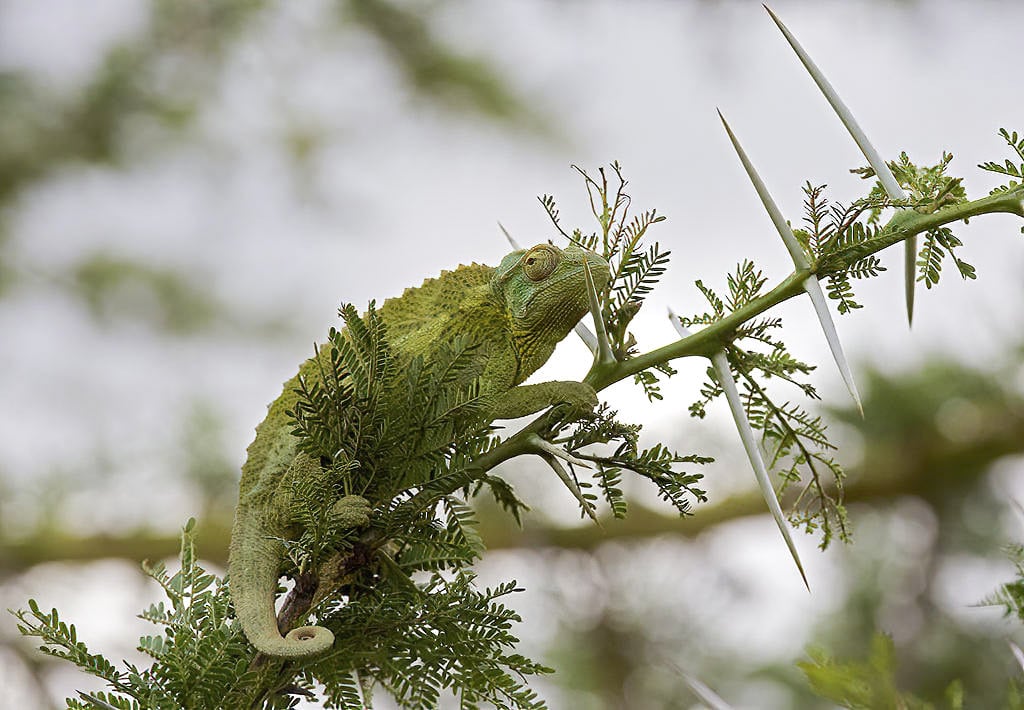
The native home of this intriguing reptile is Mount Kenya, with its varied vegetation and high insect population. At some point, humans transported the Jackson's chameleon to Hawaii, where they have now made a home, thriving amongst the rich vegetation and plentiful insect population. Sadly, chameleons of all varietals are a very popular exotic pet and far too many of these creatures are now captured in the wild and then shipped around the world for private ownership, many dying along the way.
Photographic Challenges
Chameleons certainly charm the camera, but they are a challenge to capture. First, you have to find them. They are very well camouflaged. I rely on Anton on our travels around Nairobi where even the vegetation in a parking lot can provide a hidden home. In the dark shadows of foliage, you do not have much light and the small horns are long enough to throw off your depth of field. Trying to steady yourself as you reach in between branches and relying on very low f-stops and slow shutter speeds to compensate for the lack of light, they are difficult to capture from end-to-end — but I certainly never tire of trying!
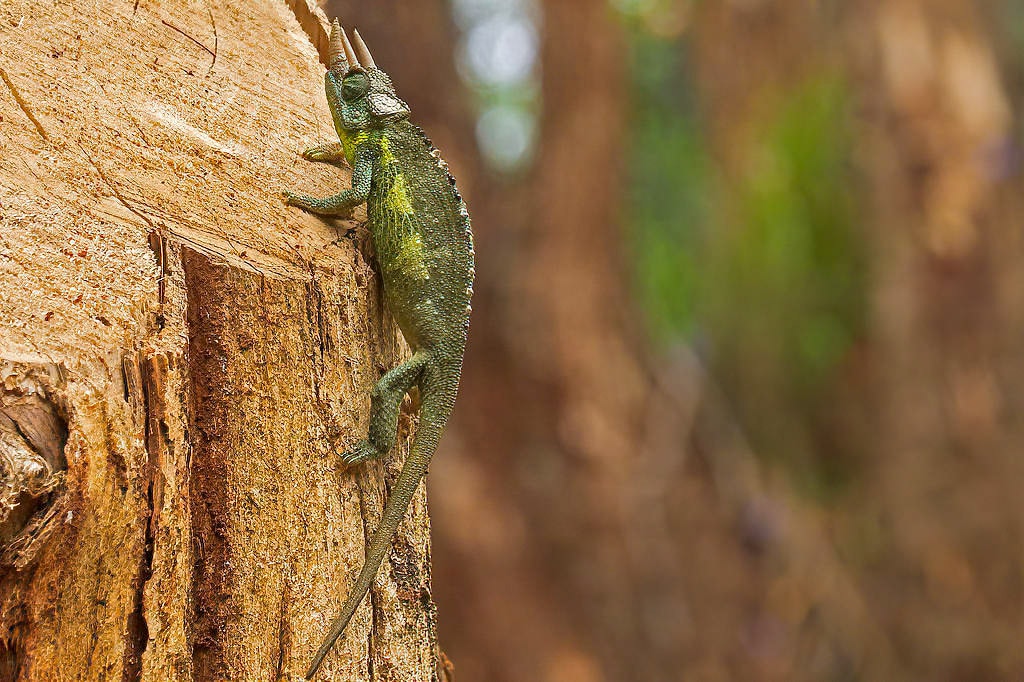
For more about my adventures with chameleons, check out Up Close with Chameleons on my ko-fi.com/njwight page.
Battle of Life and Death in South Luangwa
On an evening game drive in the Nsefu sector of South Luangwa National Park, we came across a very unusual and emotional sighting. Down on the dry riverbed, a battle of life and death was taking place between an animal at the very beginning of its life, and one nearing the very end. This story was published with editorial copy and colour images in the U.K.'s Daily Mail. The story below is my own.
(The images that follow contain difficult subject matter.)
A Lioness Nearing Her End
Midmorning we spotted an older lioness lying lifeless in tire tracks on the Luangwa riverbed. The sun was blazing hot and she most certainly had no energy to move. From her sharp hip bone and protruding ribcage, it was quite clear she was suffering and had not eaten for many days. Because she was at a distance, it was difficult to see her well, but her distress was painfully evident. As we drove away, I honestly did not think this girl would make it through the day. The fact that she was a mature female, ant least 12 years old — near the end of her natural life — did not make it any less heartbreaking. It is one of the hardest things about what I do — watching an animal suffering and knowing all you can do is respectfully bear witness.
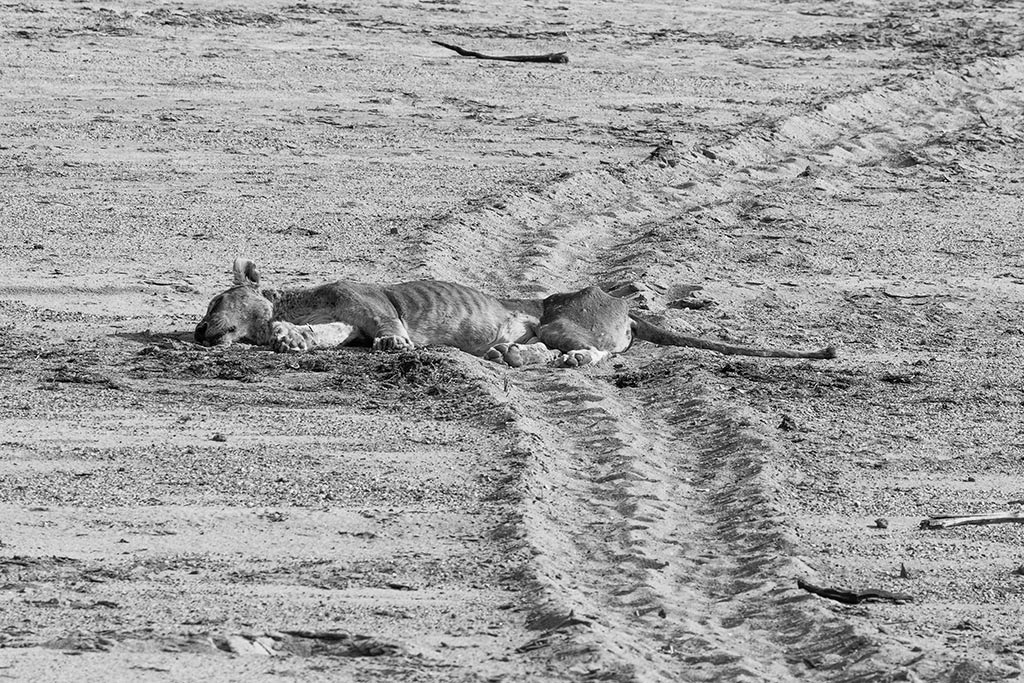
Later that day, driving through the shadows of nightfall, we were alerted to activity down on the river bed. We arrived under darkness and positioned ourselves on the bank above. In the middle of the riverbed we were shocked to see the same lioness and she was in the throes of attacking a young elephant! They were at a fair distance and it certainly proved challenging to photograph under the fading beams of the jeep headlights.
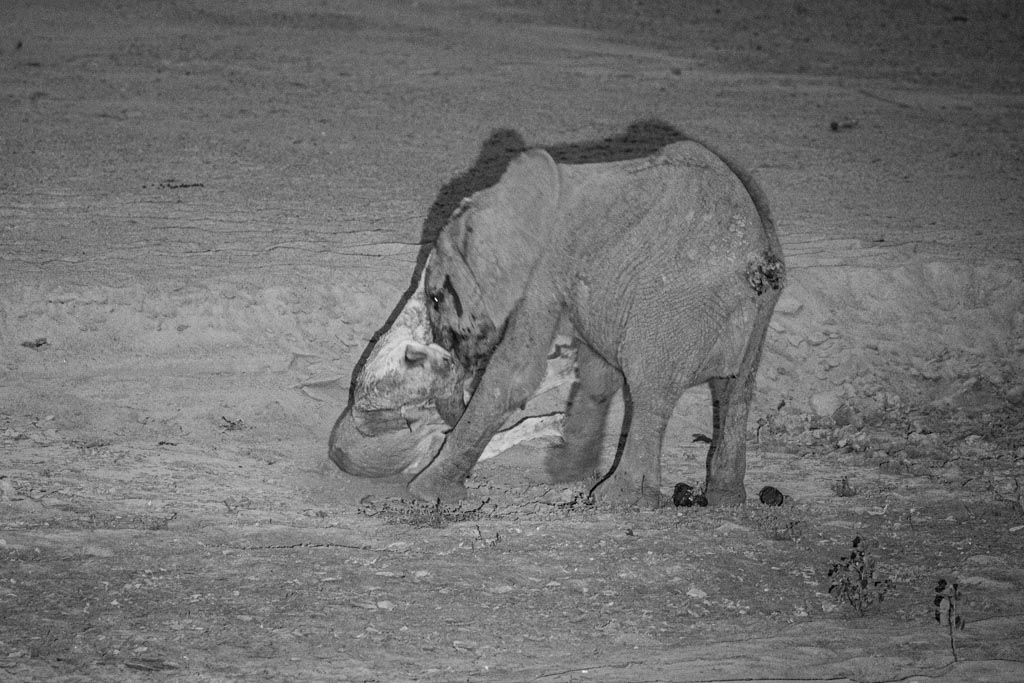
A Young Elephant Fends for Itself
The elephant was likely between 1-2 years old and far too young to be on its own. Clearly separated from its herd, it would have a difficult time surviving. That did not stop the calf from putting up a heroic fight. By the time we arrived, it was evident that the lioness had already bitten off the elephant’s tail. She had the small trunk in her jaws, wrestling to hold on and bring it down. It was shocking to see such a young elephant all alone in this fight for life. However, it was equally painful to watch the desperation of this very weak lioness. She was clearly struggling to find the strength to hunt and live one more day.
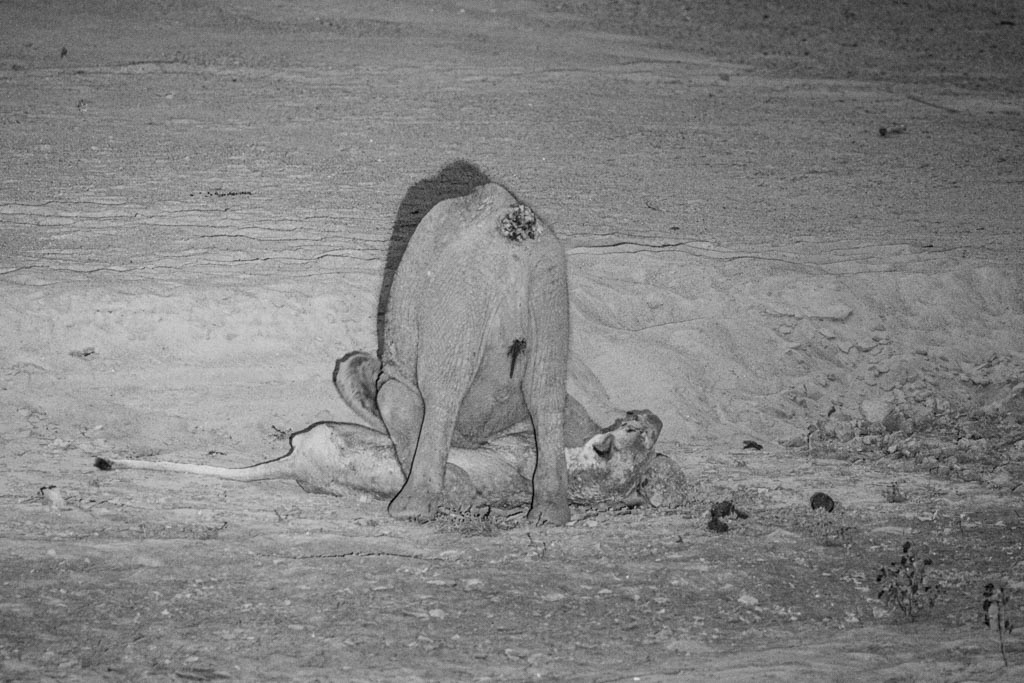
The tenacious young elephant managed to use its bulk to its advantage, straddling the lioness as she was clinging to its trunk. The big cat was eventually too weak to hold on and found herself flattened. She was in a desperate situation under the weight of her feisty opponent.
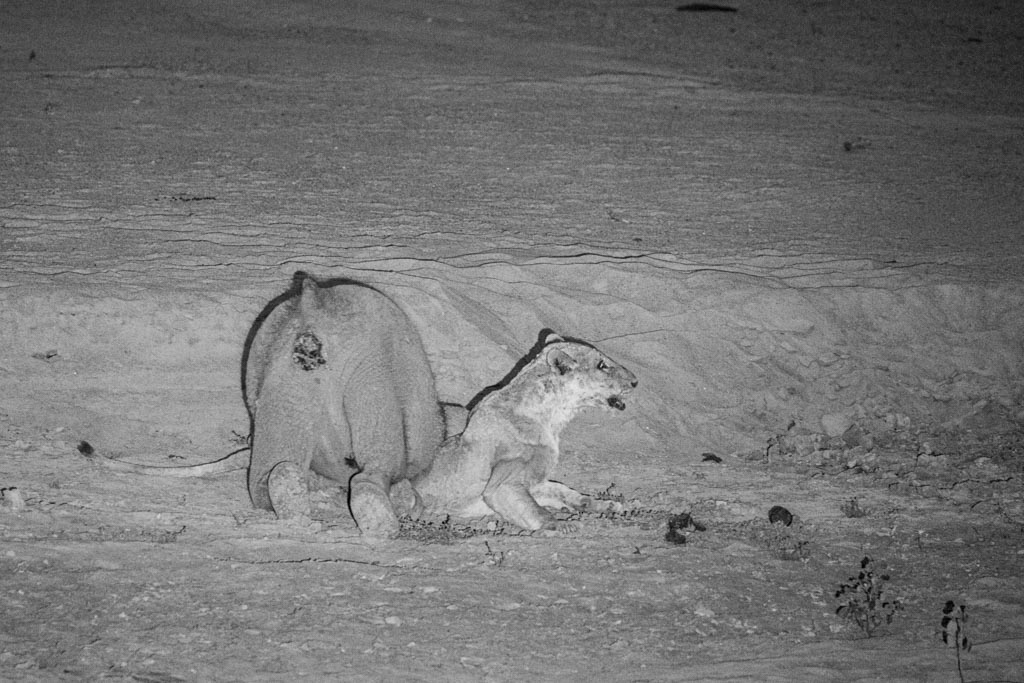
A Battle of Life and Death Comes to an End
It took an enormous effort for the old lioness to pull herself free. When she finally managed to stand, the young elephant turned towards her, fiercely trumpeted and fearlessly chased her off!
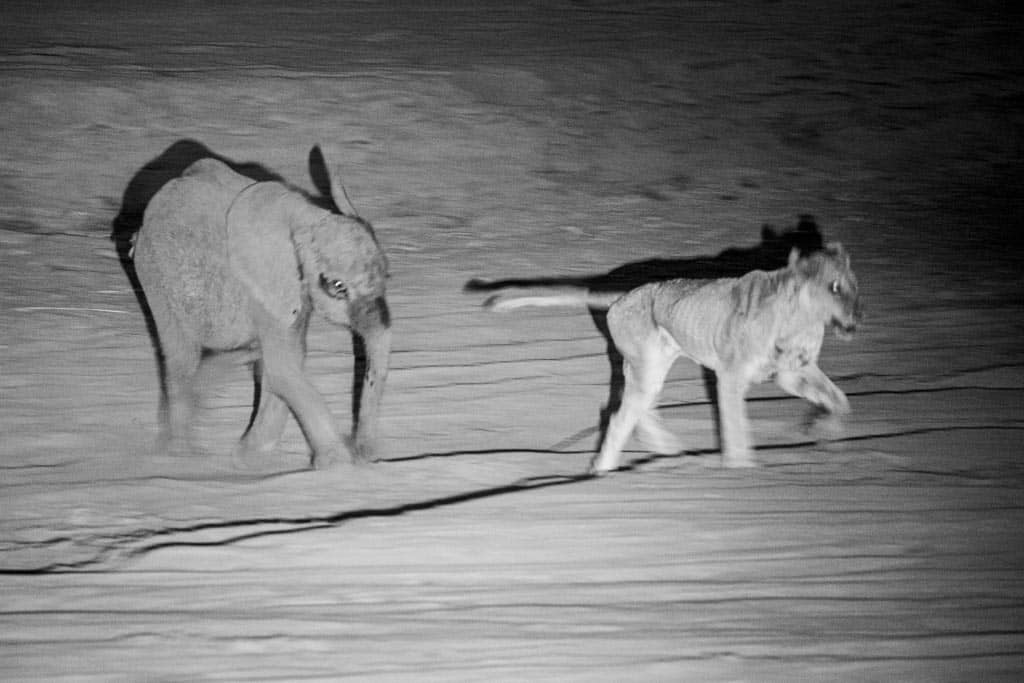 Moments later, the emaciated big cat climbed the bank and came out right in front of our truck. She was panting heavily and clearly exhausted. We could see she had several teeth missing and her gums were bleeding.
Moments later, the emaciated big cat climbed the bank and came out right in front of our truck. She was panting heavily and clearly exhausted. We could see she had several teeth missing and her gums were bleeding.
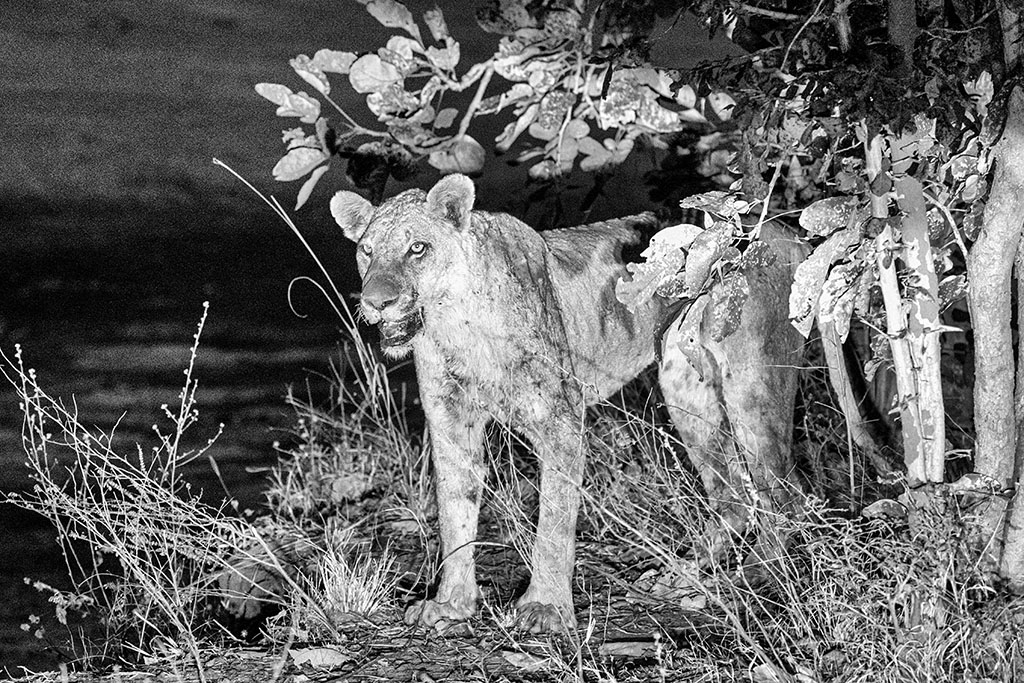
No Winner in South Luangwa
My heart was heavy for these two fierce survivors. We had likely witnessed the lioness in her last attempt to feed herself. Her body was discovered the next morning. The elephant survived, although was clearly wounded. It was unclear how it came to be wandering on its own at such a young age and I knew in my heart it was going to have more life-threatening challenges ahead if it was not soon reunited with the herd.
On Life and Death and Bearing Witness
It is never easy to see an animal suffer, but for one animal to survive, often, another must die. This is a fundamental part of understanding our natural world. It is a fundamental part of my work to document these difficult but natural occurrences.
Professionally, it is my intention to teach about the wildlife subjects I observe and photograph—all aspects of their lives. When I am working, I try not to turn my back on an animal suffering because it is uncomfortable for me. I very much try to hold myself accountable to bear witness. I show my respect to a life that is being taken by not turning away, and I say a silent thank you to them for giving their life so that another can live. I watch a predator hunt successfully and I feel gratitude that they are able to have another meal-especially if they have a family. This part of my work Is never easy, but I am committed to doing my best to hold both of these feelings in my heart at the same time. To honour both lives. I have learned more than I could have ever imagined by watching difficult sightings in the wild. It has been a great privilege to bear witness to all I have seen.
Thanks!
I appreciate you taking the time to look at my work. I support myself through my photography and writing. Please check out my memberships on Ko‑fi My members have access to additional exclusive content, including behind-the-scenes virtual safari updates. I greatly appreciate your support. Thanks for your consideration.
New Beginnings
"If all you can do is crawl, start crawling." —Rumi
What better way to bring in a new year than to celebrate some of the little lives I have been privileged to photograph in Africa. It is always special to watch young animals making their way in the world with exuberance and curioisty and I love the creative challenge of capturing their energy and innocence. They are endlessly amusing and I am aware of striking a balance between following their antics through the viewfinder and sitting back and enjoying the show. Either way, it is difficult not to feel joyful in their presence. They are so deserving of our respect and protection. We must not fail them.

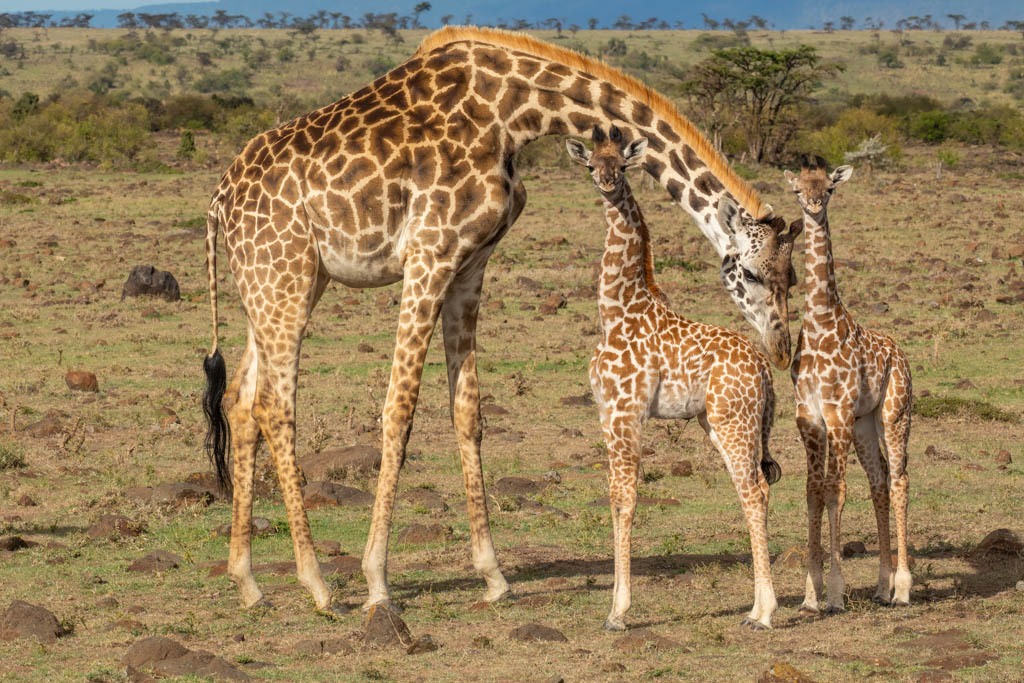
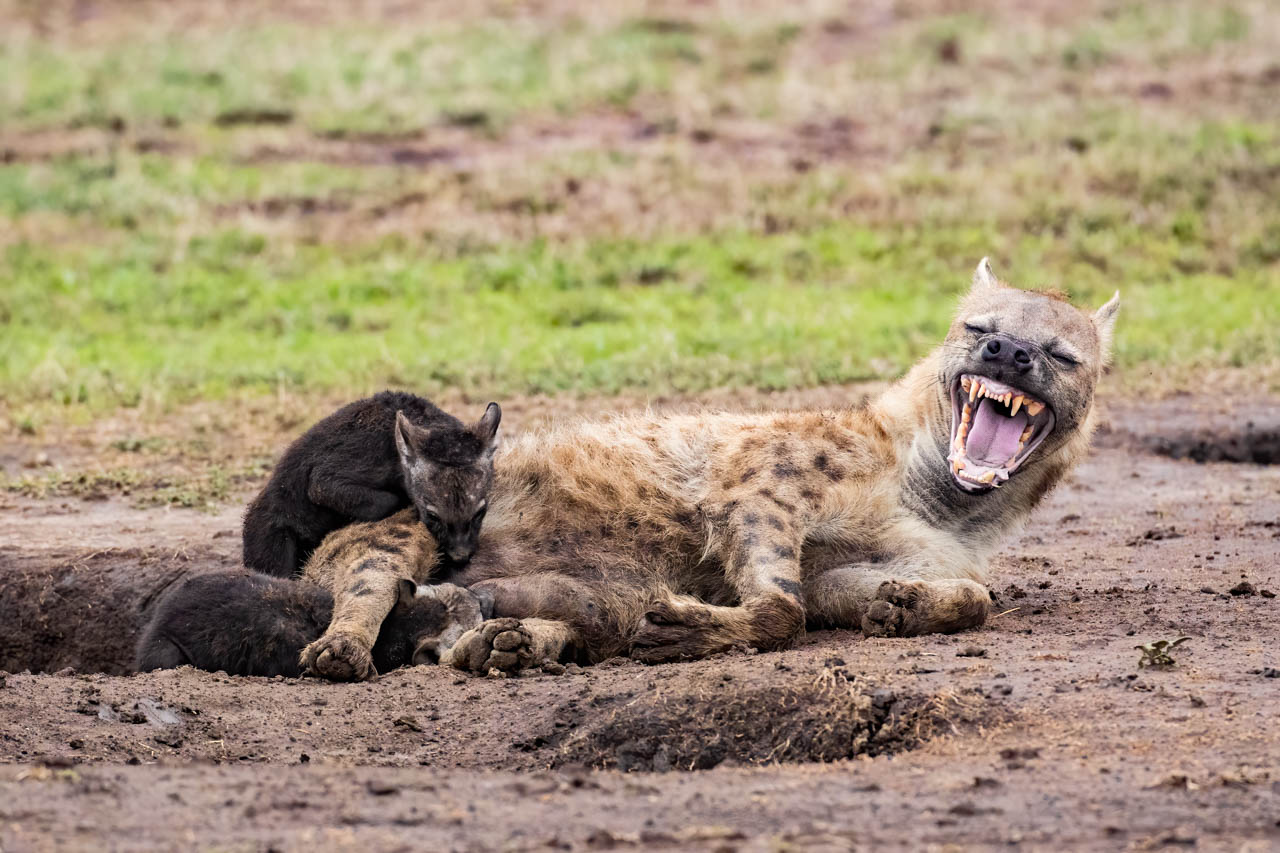

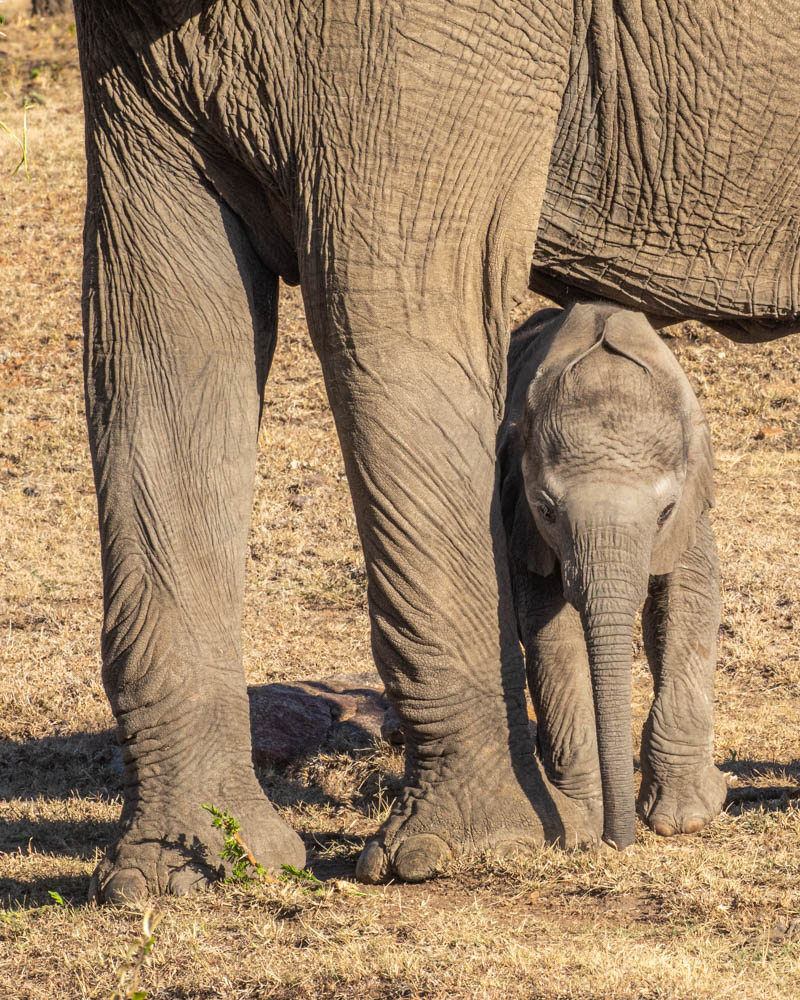
Wishing you a peaceful year. Thanks so much for your continued encouragement and support of my work.
Ode to Hummingbird by Pablo Neruda
The hummingbird in flight is a water-spark...
There is something very special about the hummingbird. These small, flying jewels are unlike any other birds. Like dancing light, they are delightful to watch yet maddeningly difficult to photograph! Pablo Neruda, the 1971 Nobel Prize winner for Literature, beautifully captures these tiny birds in his poem, Ode to Hummingbird.
Ode to Hummingbird by Pablo Neruda
The hummingbird
in flight
is a water-spark,
an incandescent drip
of American
fire,
the jungle's
flaming resume,
a heavenly,
precise
rainbow:
the hummingbird is
an arc,
a golden
thread,
a green
bonfire!
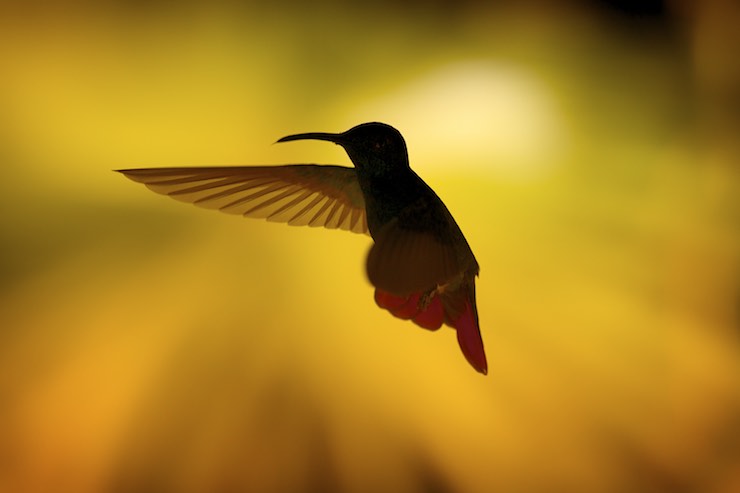
Oh
tiny
living
lightning,
when
you hover
in the air,
you are
a body of pollen,
a feather
or hot coal,
I ask you:
What is your substance?
Perhaps during the blind age
of the Deluge,
within fertility's
mud,
when the rose
crystallized
in an anthracite fist,
and metals matriculated
each one in
a secret gallery
perhaps then
from a wounded reptile
some fragment rolled,
a golden atom,
the last cosmic scale,
a drop of terrestrial fire
took flight,
suspending your splendor,
your iridescent,
swift sapphire.
You doze
on a nut,
fit into a diminutive blossom;
you are an arrow,
a pattern,
a coat-of-arms,
honey's vibrato, pollen's ray;
you are so stouthearted--
the falcon
with his black plumage
does not daunt you:
you pirouette,
a light within the light,
air within the air.
Wrapped in your wings,
you penetrate the sheath
of a quivering flower,
not fearing
that her nuptial honey
may take off your head!
From scarlet to dusty gold,
to yellow flames,
to the rare
ashen emerald,
to the orange and black velvet
of our girdle gilded by sunflowers,
to the sketch
like
amber thorns,
your Epiphany,
little supreme being,
you are a miracle,
shimmering
from torrid California
to Patagonia's whistling,
bitter wind.
You are a sun-seed,
plumed
fire,
a miniature
flag
in flight,
a petal of silenced nations,
a syllable
of buried blood,
a feather
of an ancient heart,
submerged
The Chimpanzees of Fauna: Seeing Past the Bars
This post has been updated since it previously appeared in 2014.
For the past four and a half years I have been fortunate to volunteer my time photographing the remarkable chimpazees at the Fauna Sanctuary outside Montreal. This extraordinary place is home to 14 chimpanzees, 3 monkeys and a menagerie of rescued farm animals. The chimps and monkeys have, for the most part, arrived here from research labs, zoos or the entertainment industry. Because of humans, they no longer live a free and natural life in the wilderness and are reliant on caregivers in sanctuary to tend to their needs.
Chimpanzees are large, wild animals with tremendous strength and intelligence. After spending more than 20 years alone in a small lab cage, enduring endless medical procedures, no individual could emerge without physical and psychological scars. So it is for these chimpanzees. They live with their pain, with their memories; saddled with demons and struggling with illness. They are courageous souls who have had to develop new life skills, adapt to unnatural environments and learn to trust, or at the very least, rely on humans–the fellow primates responsible for their lives in captivity.
I am honoured that most days they allow me to photograph them. Believe me when I tell you if they do not want their picture taken, it does not get taken. They walk away, turn their heads, hide, or use more emphatical means to discourage my attention. They communicate very clearly to me–this is their choice.
As a photographer and story-teller, it is my responsibility to portray them with the dignity they deserve and I seek to reveal their remarkable personalities, their complex relationships and deep emotions. My objective is always to tell their story in a truthful and respectful manner.
Frankly, I am awed in their presence. They can just as easily disrupt as inspire my creative process! I am humbled when I am with them. I learn so much from the compassionate caregivers who try to make their lives easier and more enjoyable, allowing them to make decisions–choosing where they wander, who they spend time with, what they eat...always trying to provide them with choices.
On Chimpanzees and Cages...
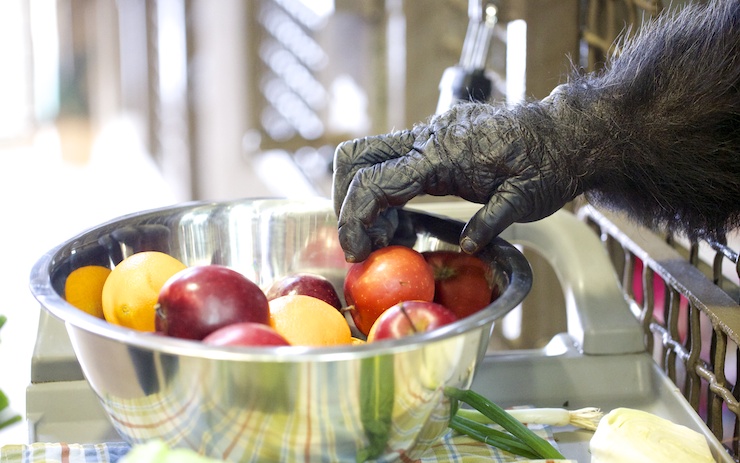 Let's be perfectly clear; these chimpanzees did not choose to live this way. This is our doing. Our choice. When I have an image posted of one of these sentient beings living at Fauna and I read comments that some people dislikes or would prefer not to see the "cages" or the "bars," it bothers me for several reasons.
Let's be perfectly clear; these chimpanzees did not choose to live this way. This is our doing. Our choice. When I have an image posted of one of these sentient beings living at Fauna and I read comments that some people dislikes or would prefer not to see the "cages" or the "bars," it bothers me for several reasons.
To begin with, the chimpanzees at Fauna do not live in "cages."
These are the cages many of them once lived in. This is an actual cell from LEMSIP that now sits in the woods on the Fauna property, out of sight of the chimpanzees, but very much present to anyone working or visiting the property. These were the bars they once lived behind...
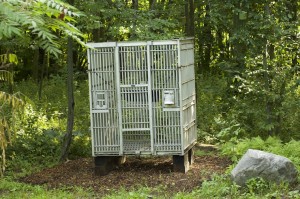

...these are the cages, that thankfully for these fourteen chimps, have been left behind.
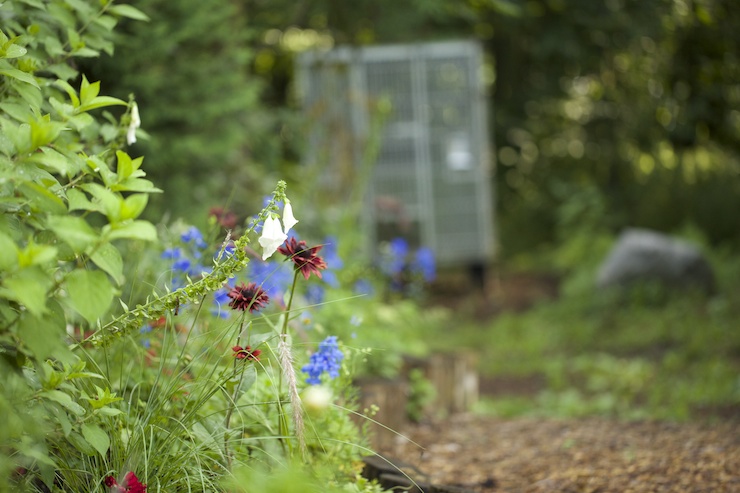
Their living space at Fauna is enclosed, absolutely, with electric wire, metal bars, locked doors, concrete walls, and even a moat. But they have acres of land, both inside their Chimphouse with its enormous ceilings and bright, unbarred windows, as well as on the acres of islands dotted with treehouses, hammocks and climbing structures. Elevated above the islands and leading away from the house are iron skywalks with canvas covers and see-through windshields in inclimate weather. The chimps can walk around outside, find quiet places to nap or be with friends while still enjoying some protection from rain and wind.
However, they need to stay safe. Their caregivers need to stay safe. So, they need to be enclosed.
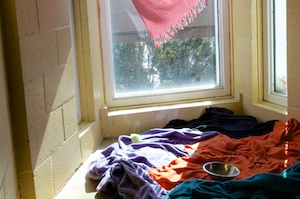
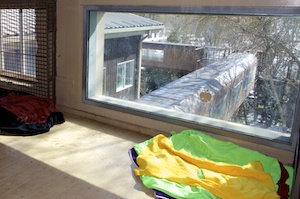
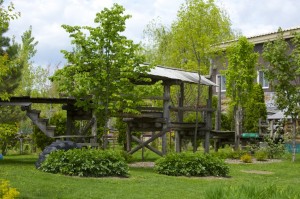
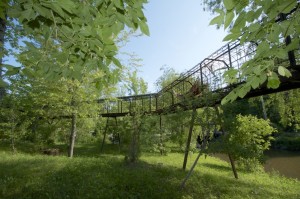
Above: There is always available bedding to build night nests in the windows of the Chimphoue. Below: Island structures and outside skywalks.
So, why is it that we do not want to see the metal? Do we feel less guilty seeing them without the bars? We are so privileged to give witness to their lives–an opportunity that should never have been afforded us–should we not accept the terms that we created for them as they live this life they did not choose? To me, with or without the bars, they are the same remarkable, powerful, thoughtful and emotional chimpanzees. This is who I see. This is who I photograph.
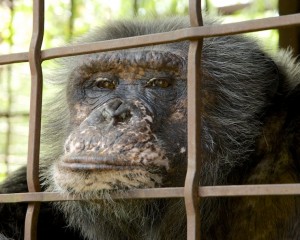
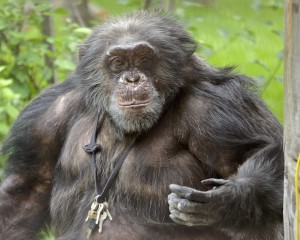
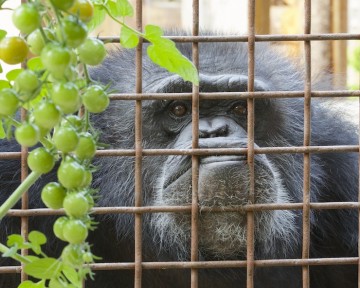
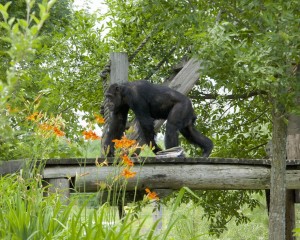
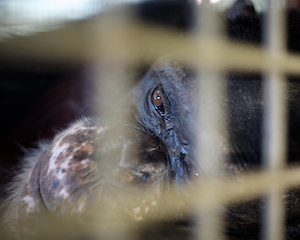
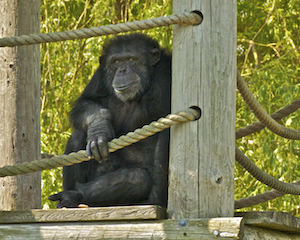
When you are looking at one my photos of the Fauna chimps, you are seeing what I choose to show you. I make an emotional and creative decision. Of course I like to see the chimpanzees without obstacles in front of their beautiful faces. I push my skills to discover better techniques for creating images that will make the bars "disappear." The work is very difficult and long with far more failure than success. But when they choose to co-operate, I feel they have offered me a great gift and that I must not let them down.
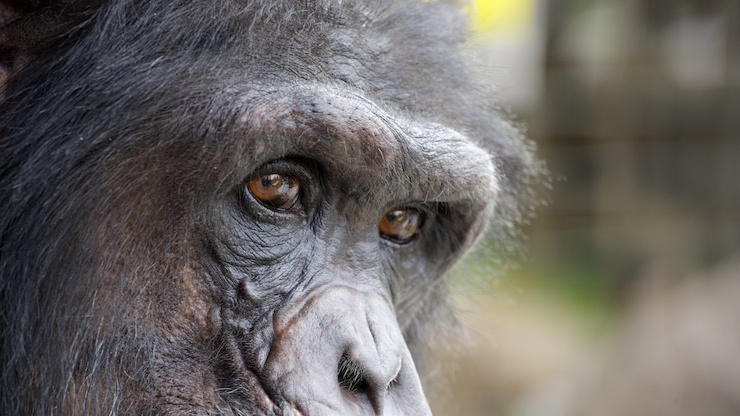
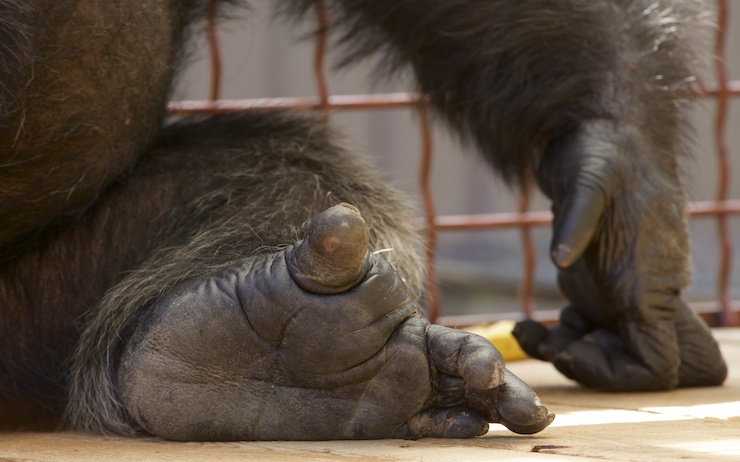
I do this work because I want to represent them and to help tell their stories. For these chimpanzees, their lives, their stories — past and present — take place behind bars. That will not change. Be mindful that as a photographer I am creating an image–making a moment. Regardless of what I choose to show you in my photos, make no mistake; the enclosures — the bars — they are always present...but lets all remember why they are there.
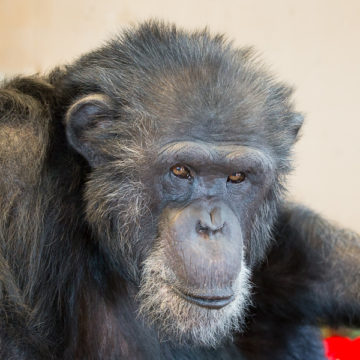
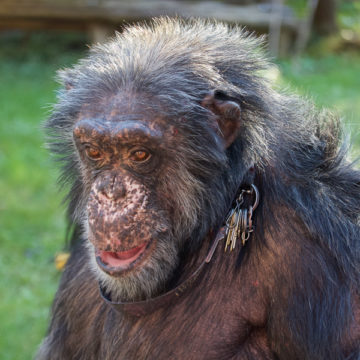
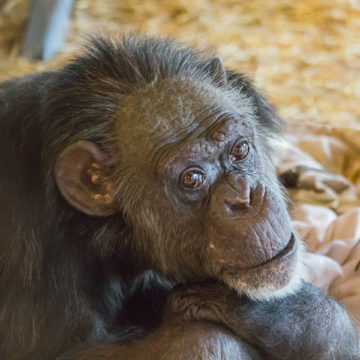
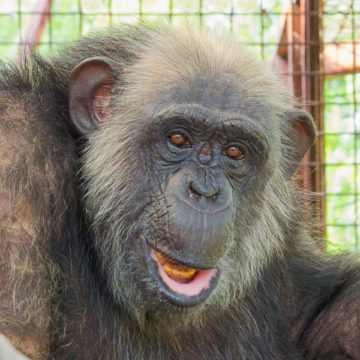
For these fourteen chimpanzees, thankfully, their home is no longer a cage. But there will always be locks, electrical wire and bars. Perhaps we can all look a little harder to see past them.
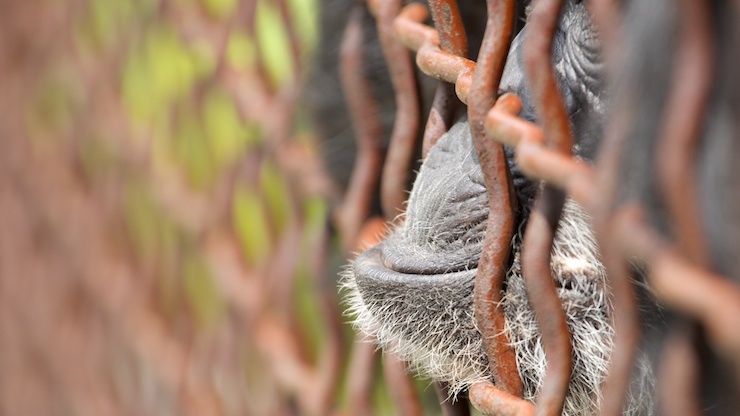
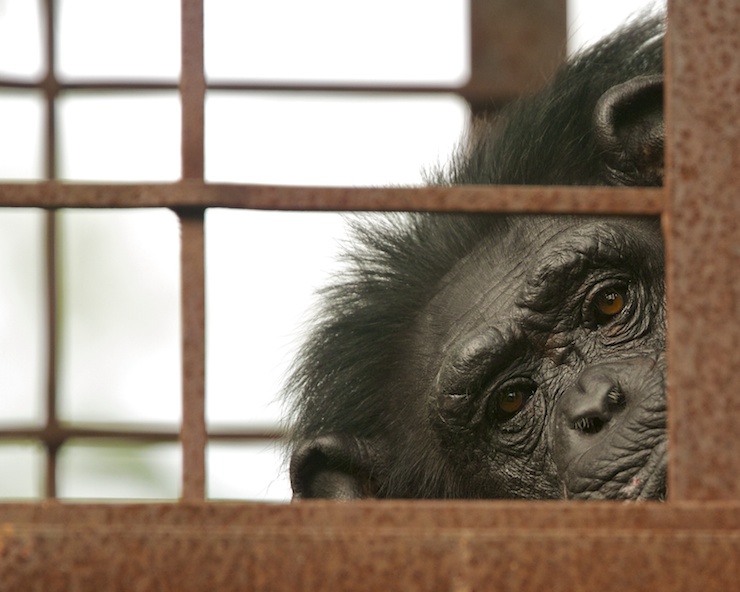
All photos © NJ Wight
Thank you Gloria Grow for all that you do and for inviting me into this world. I am forever grateful.
You can support the Fauna chimps by visiting www.faunafoundation.org.
95% Chimp

